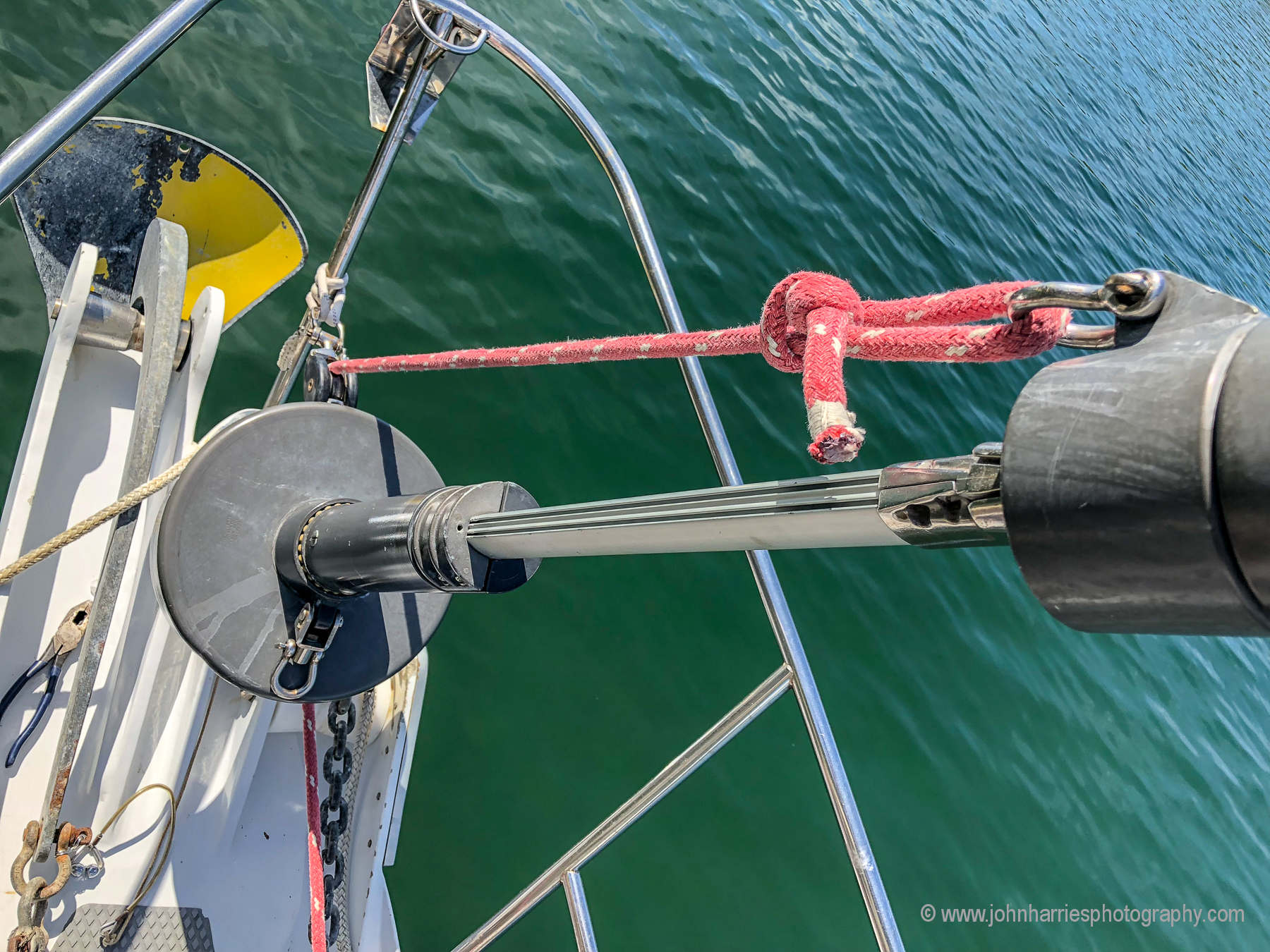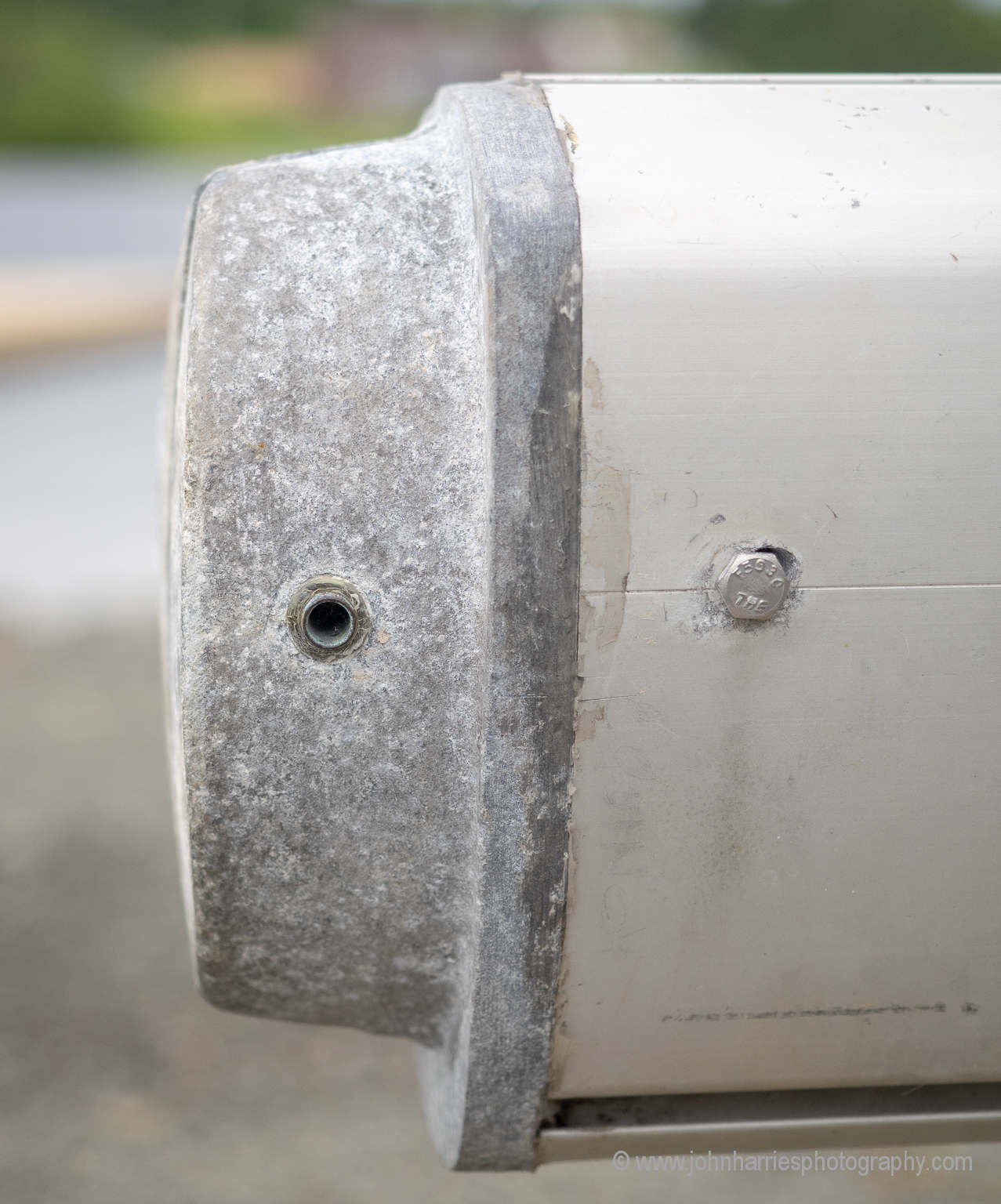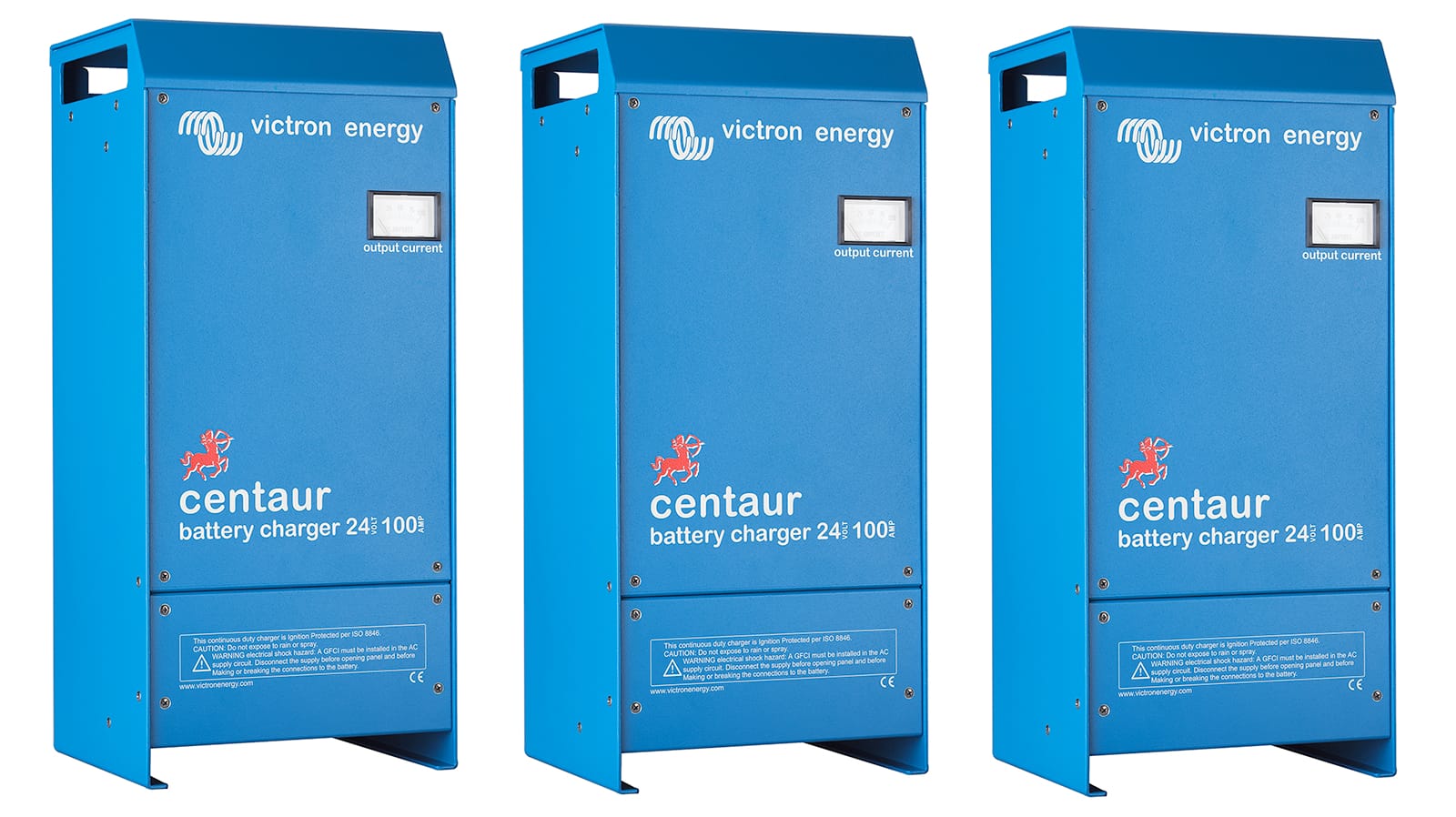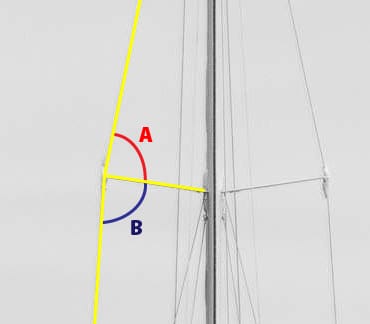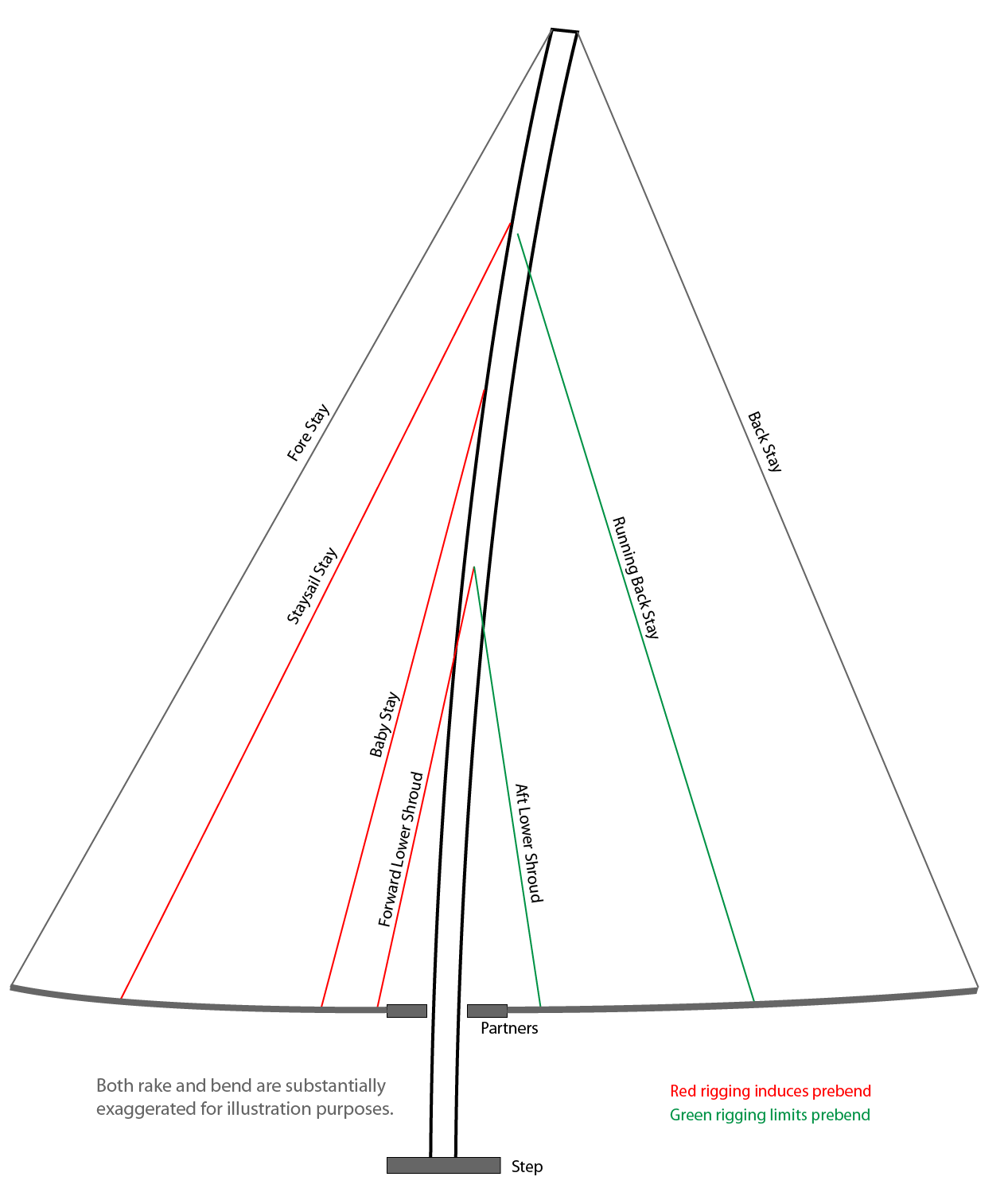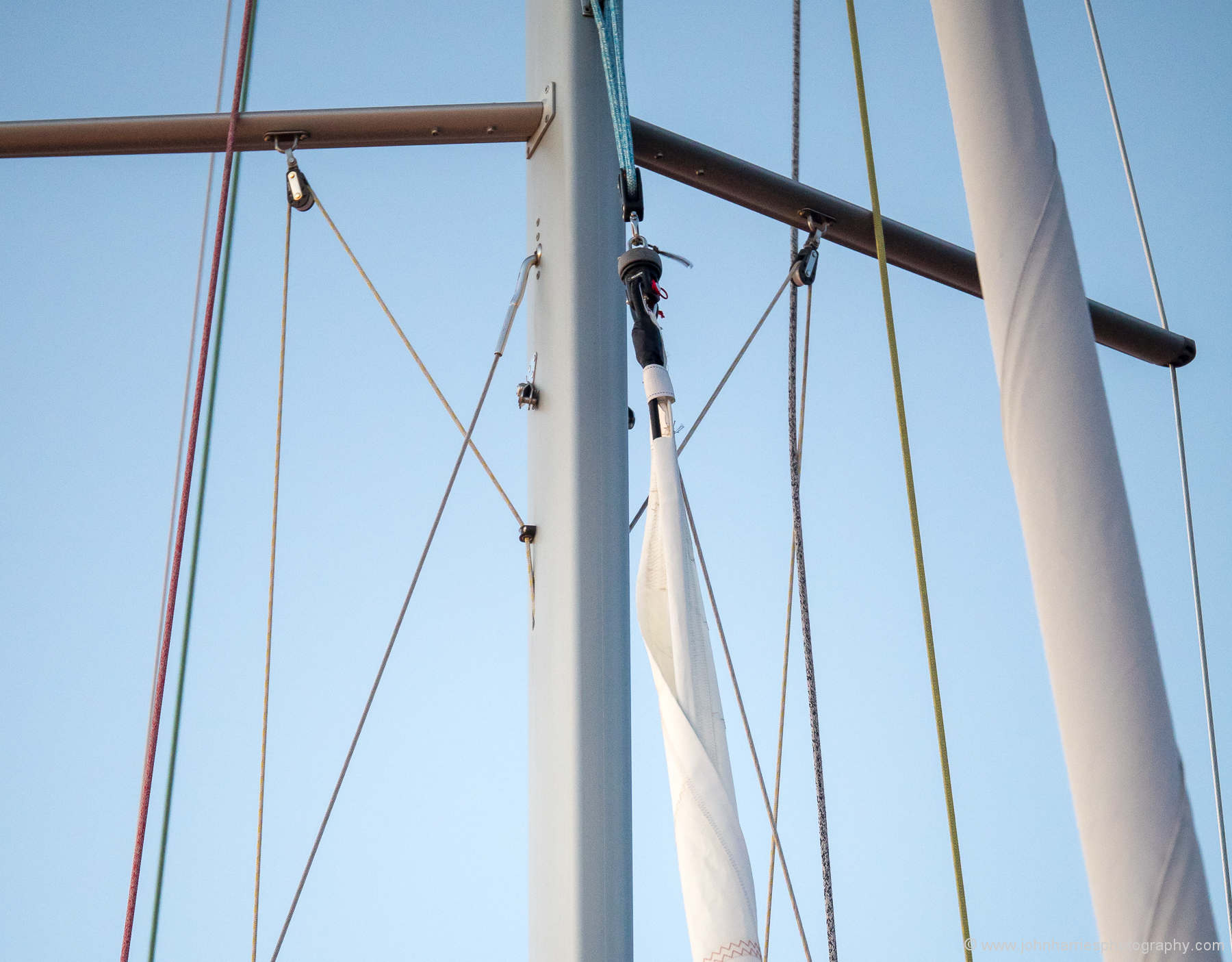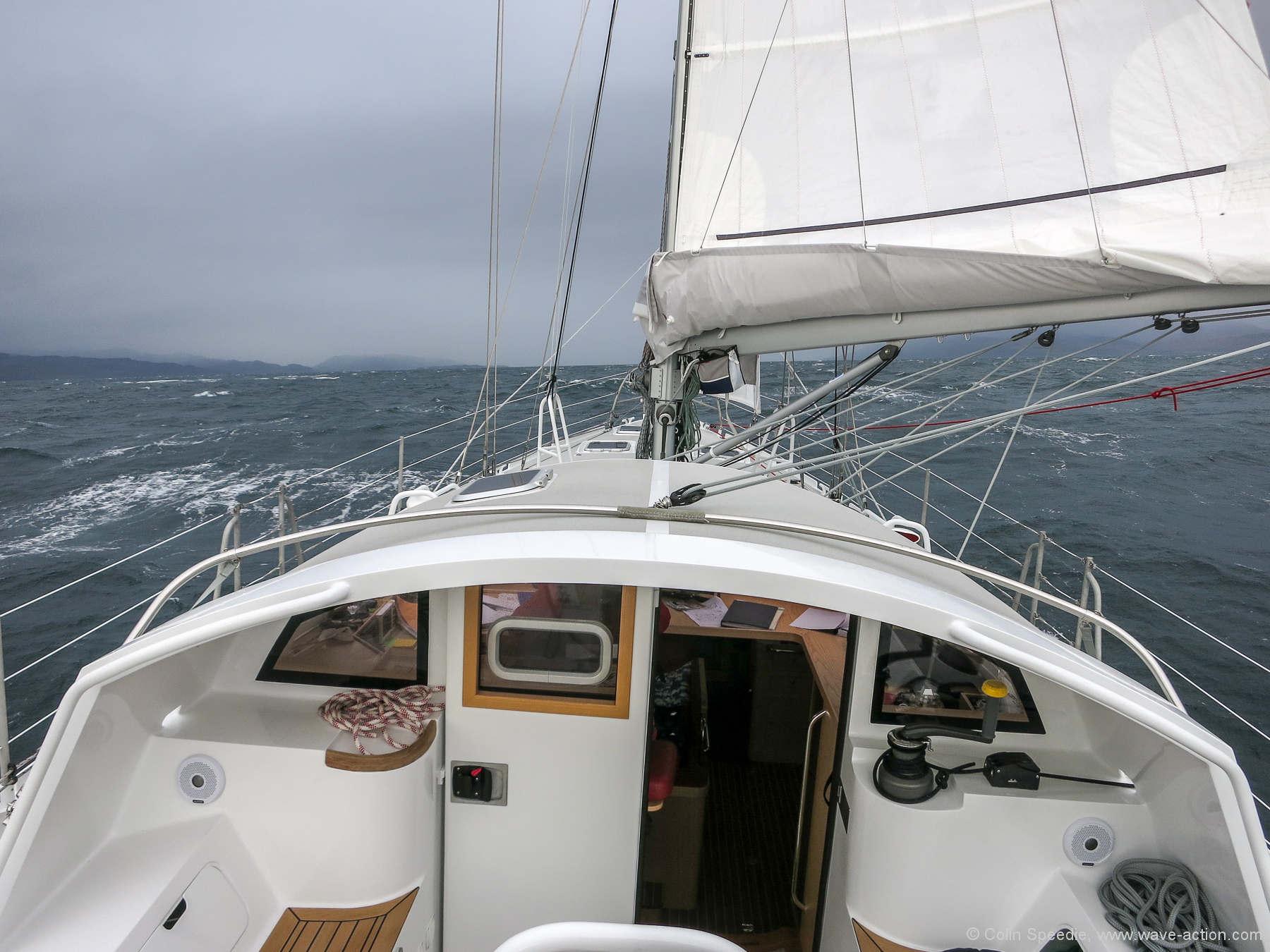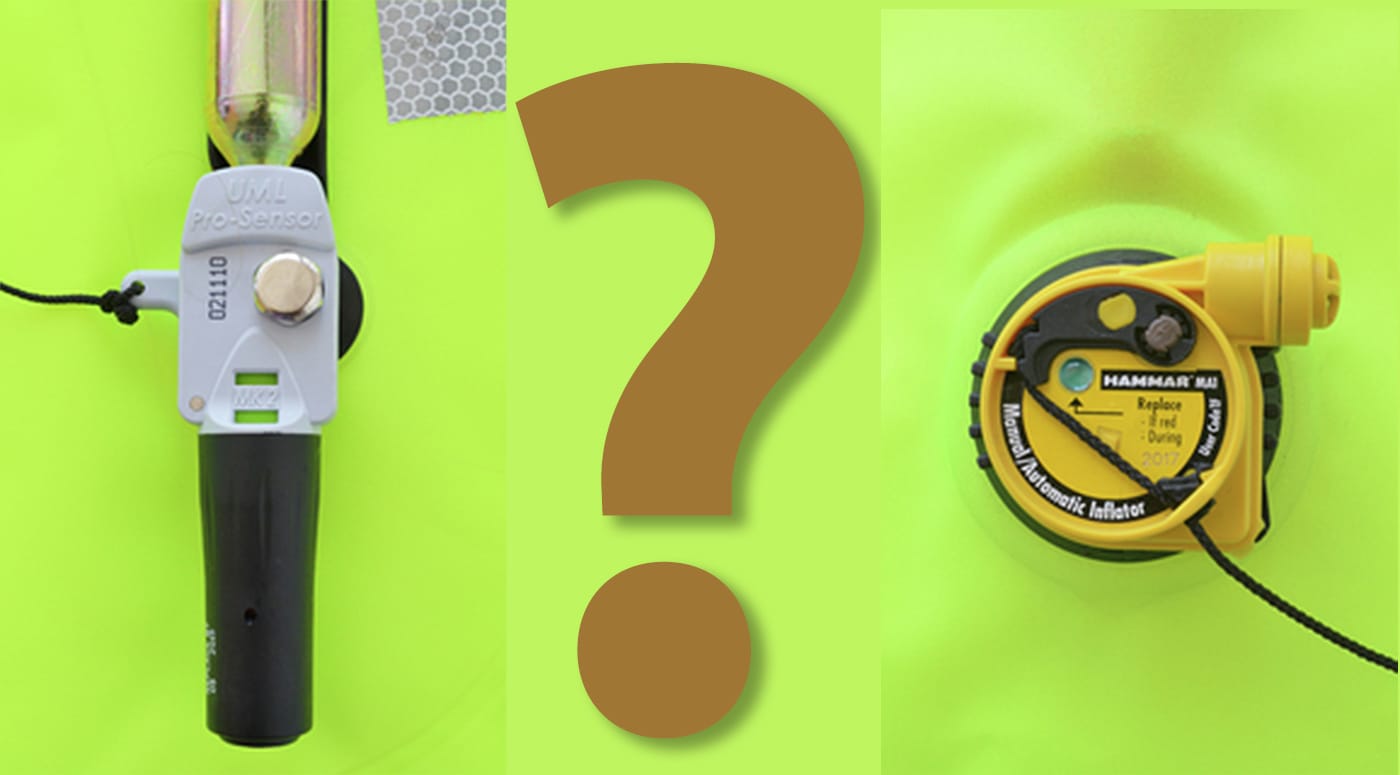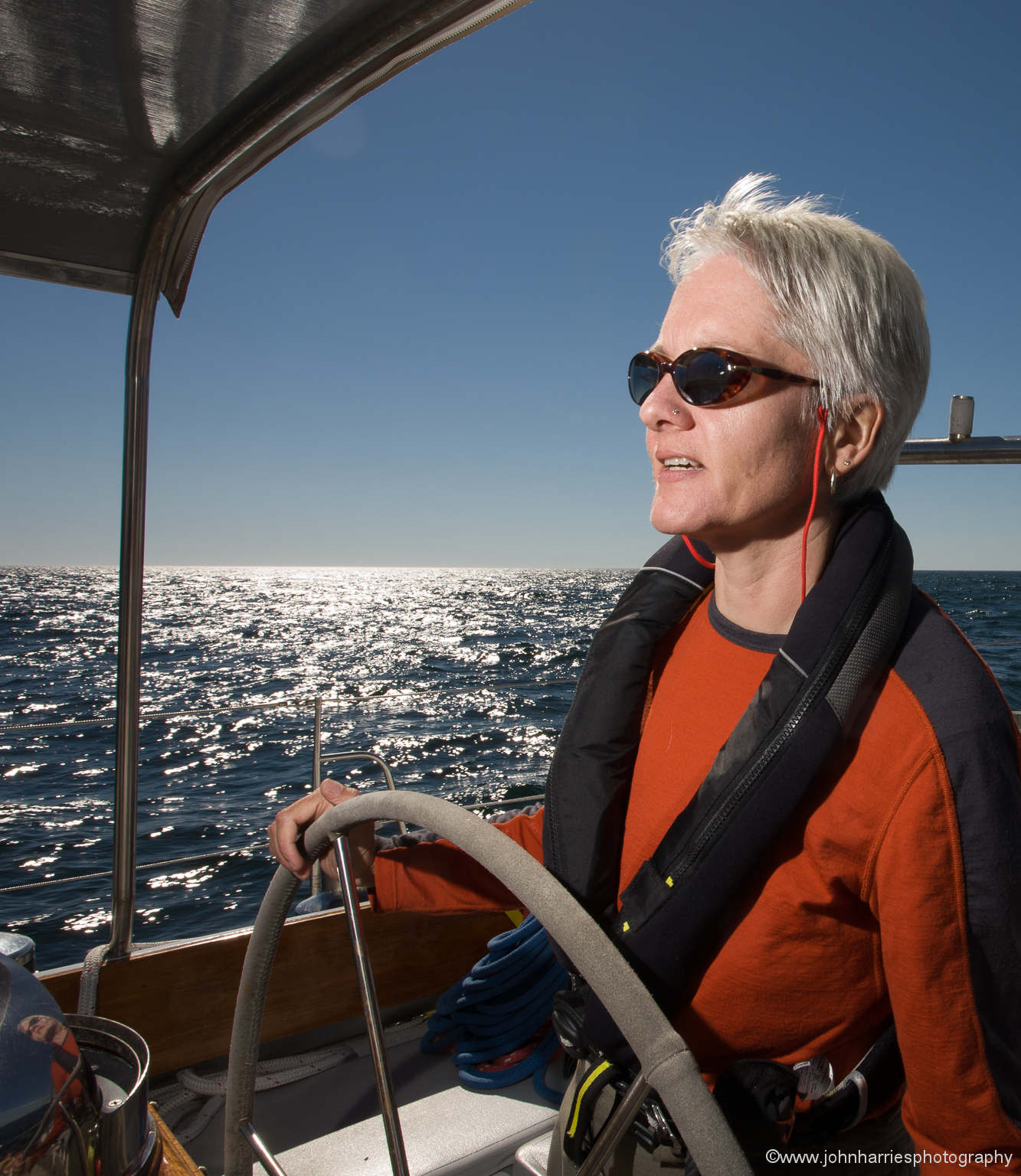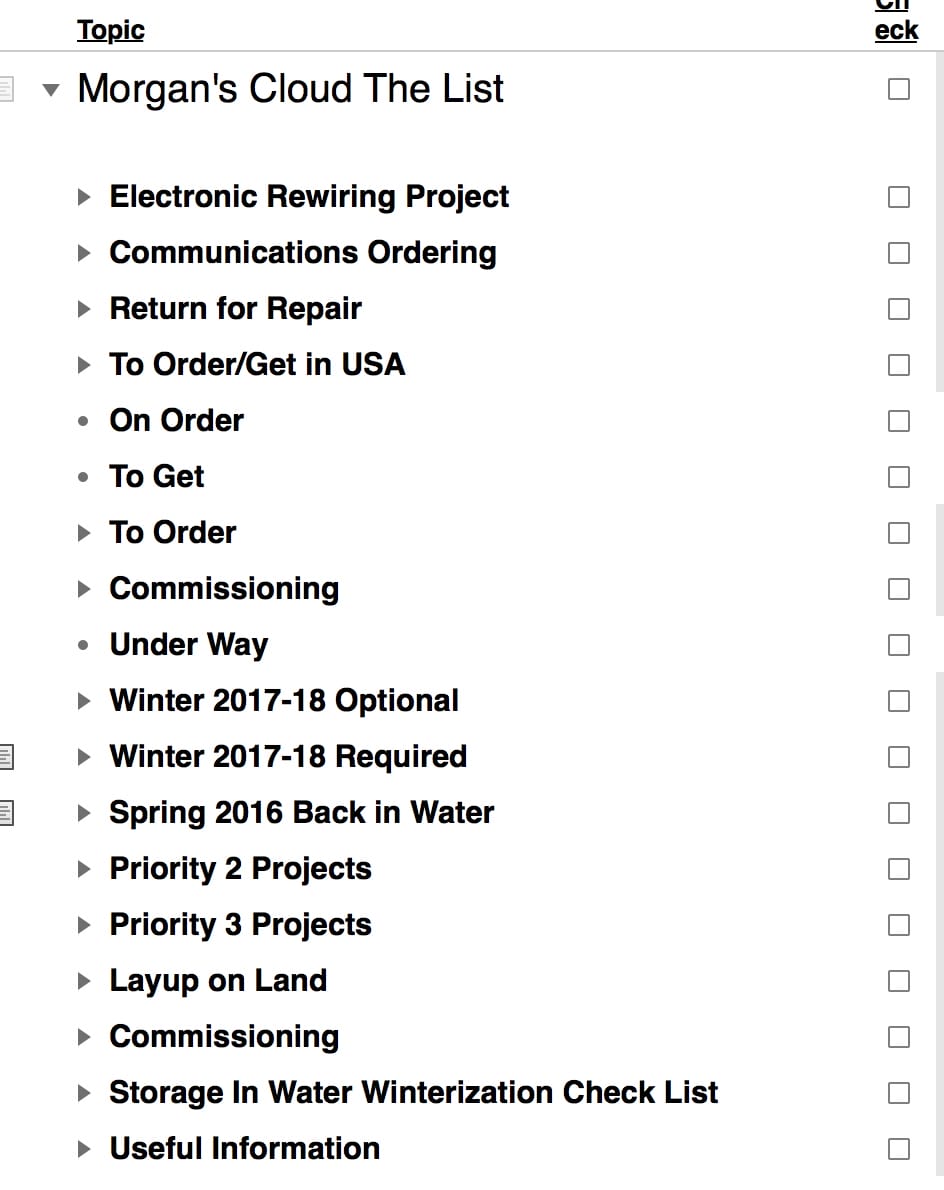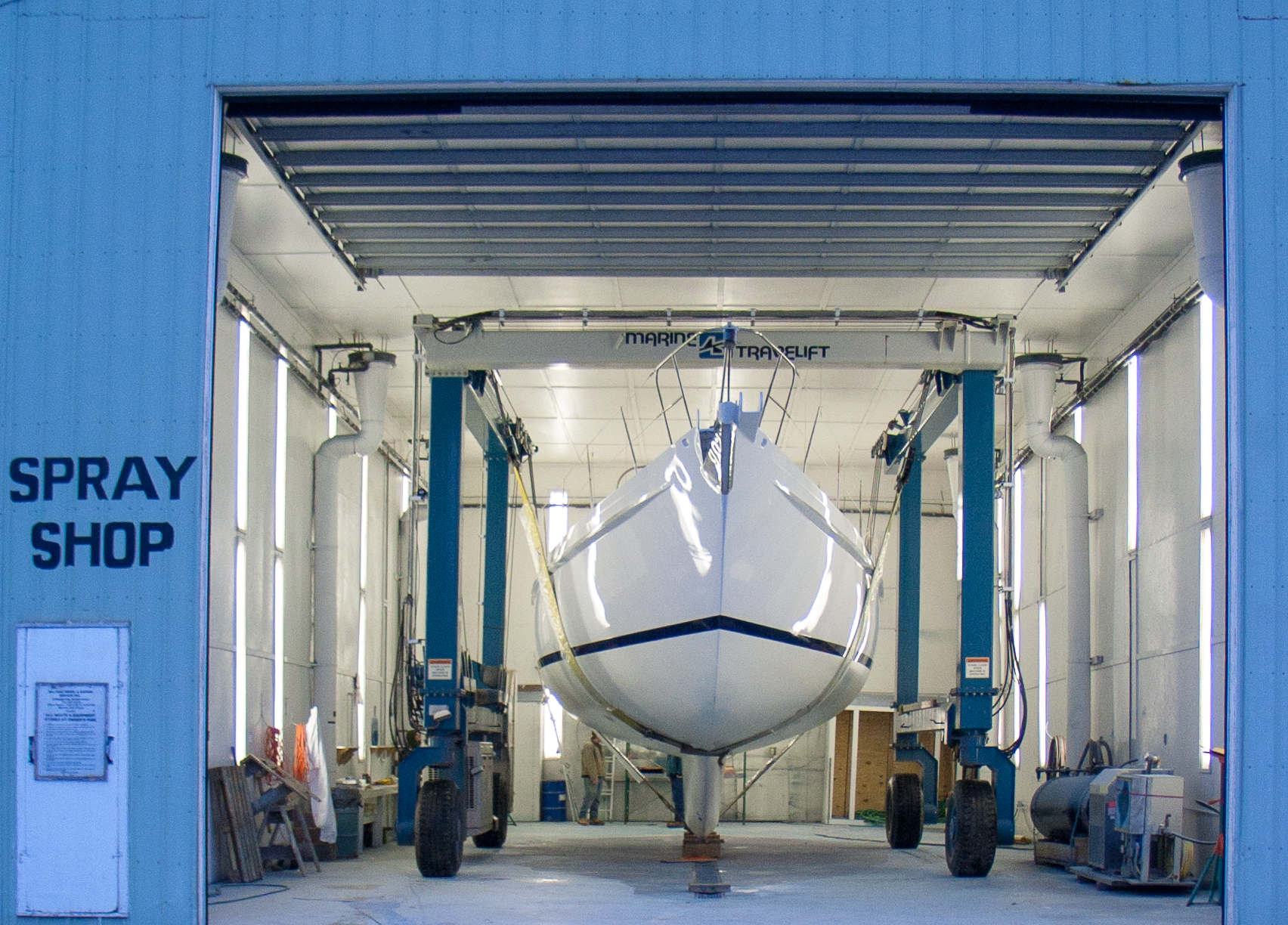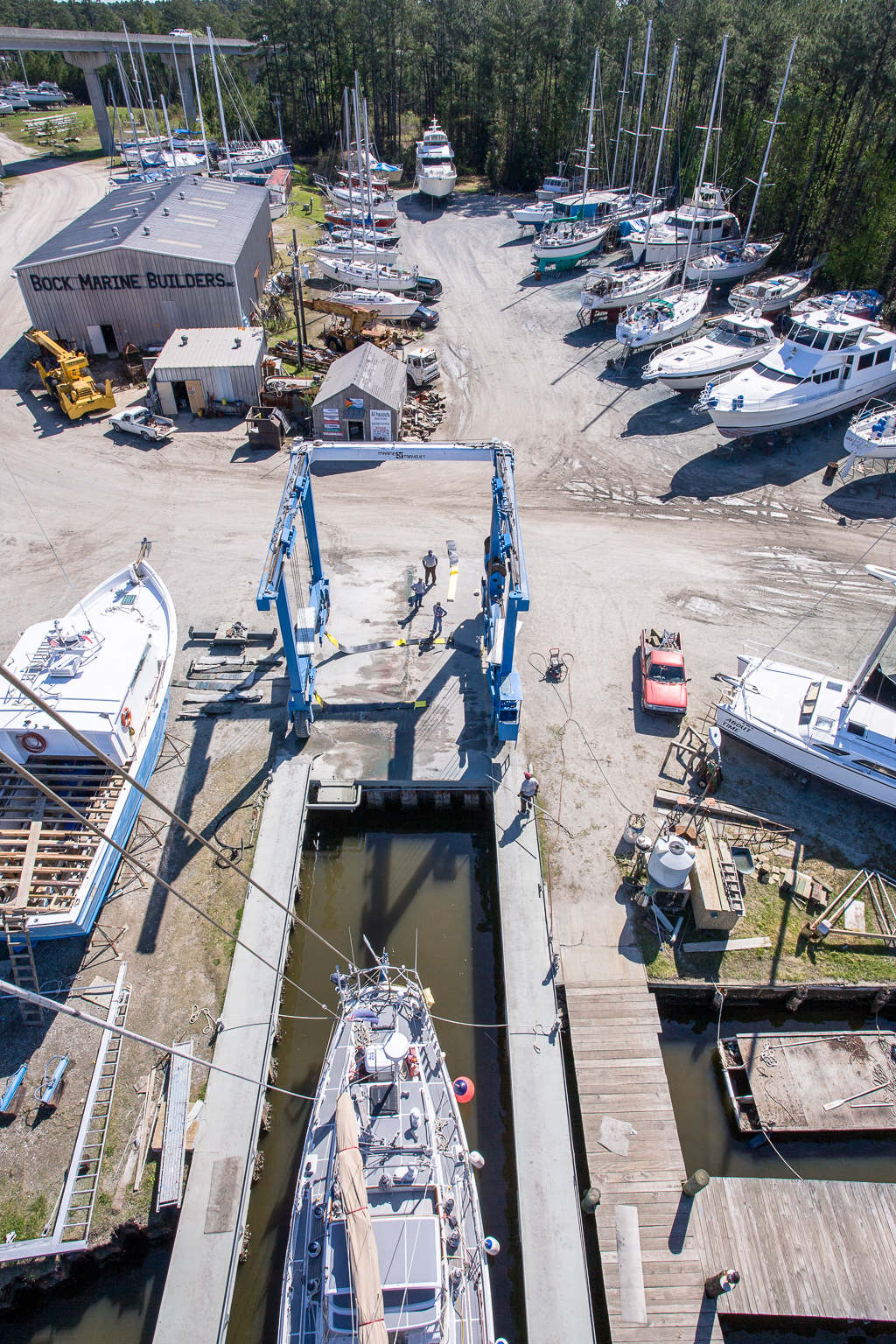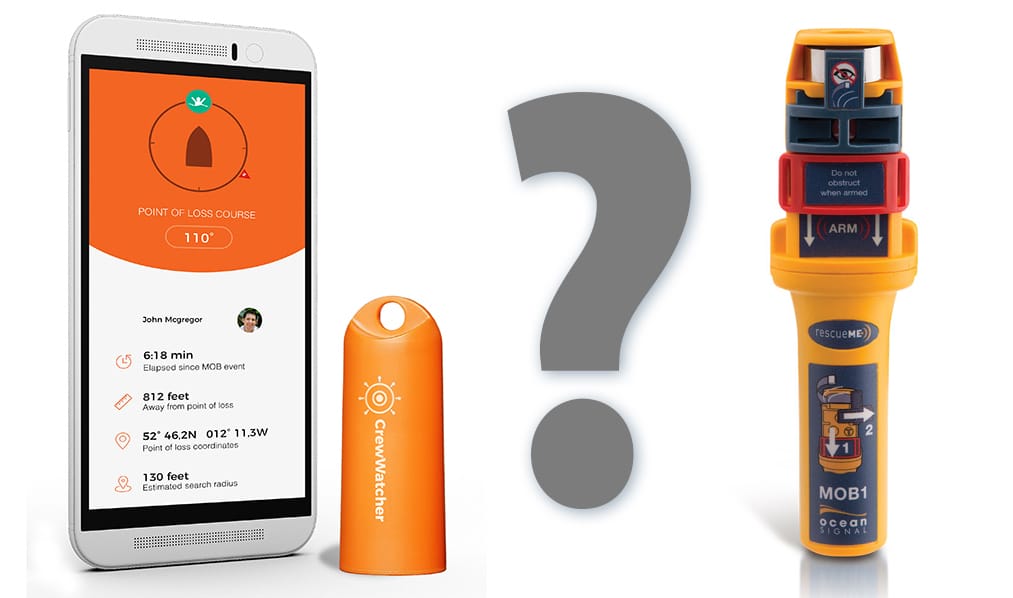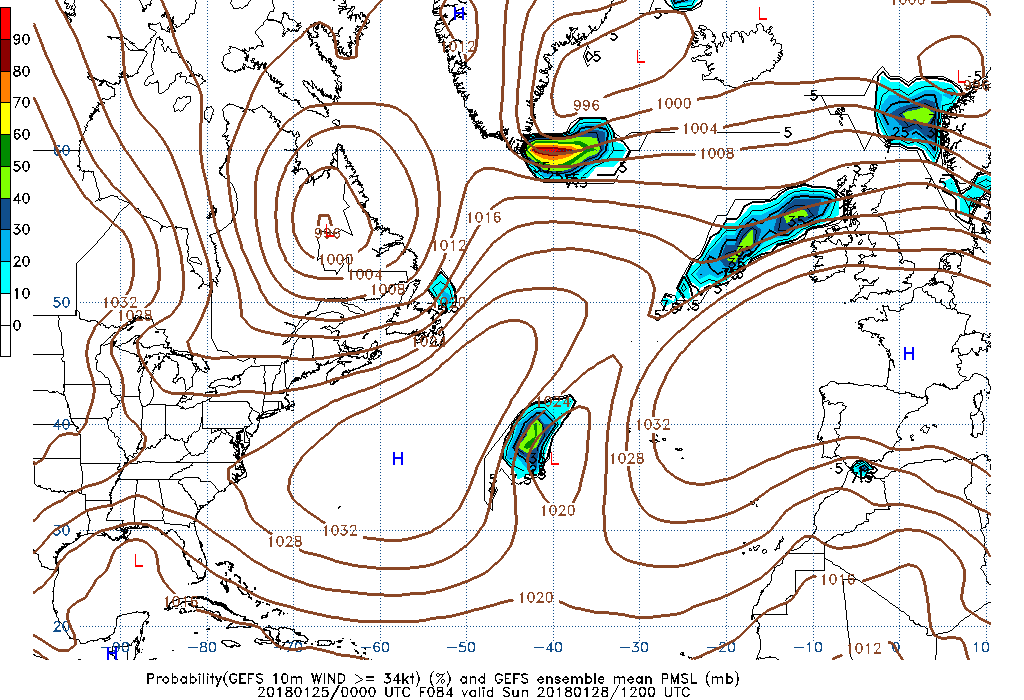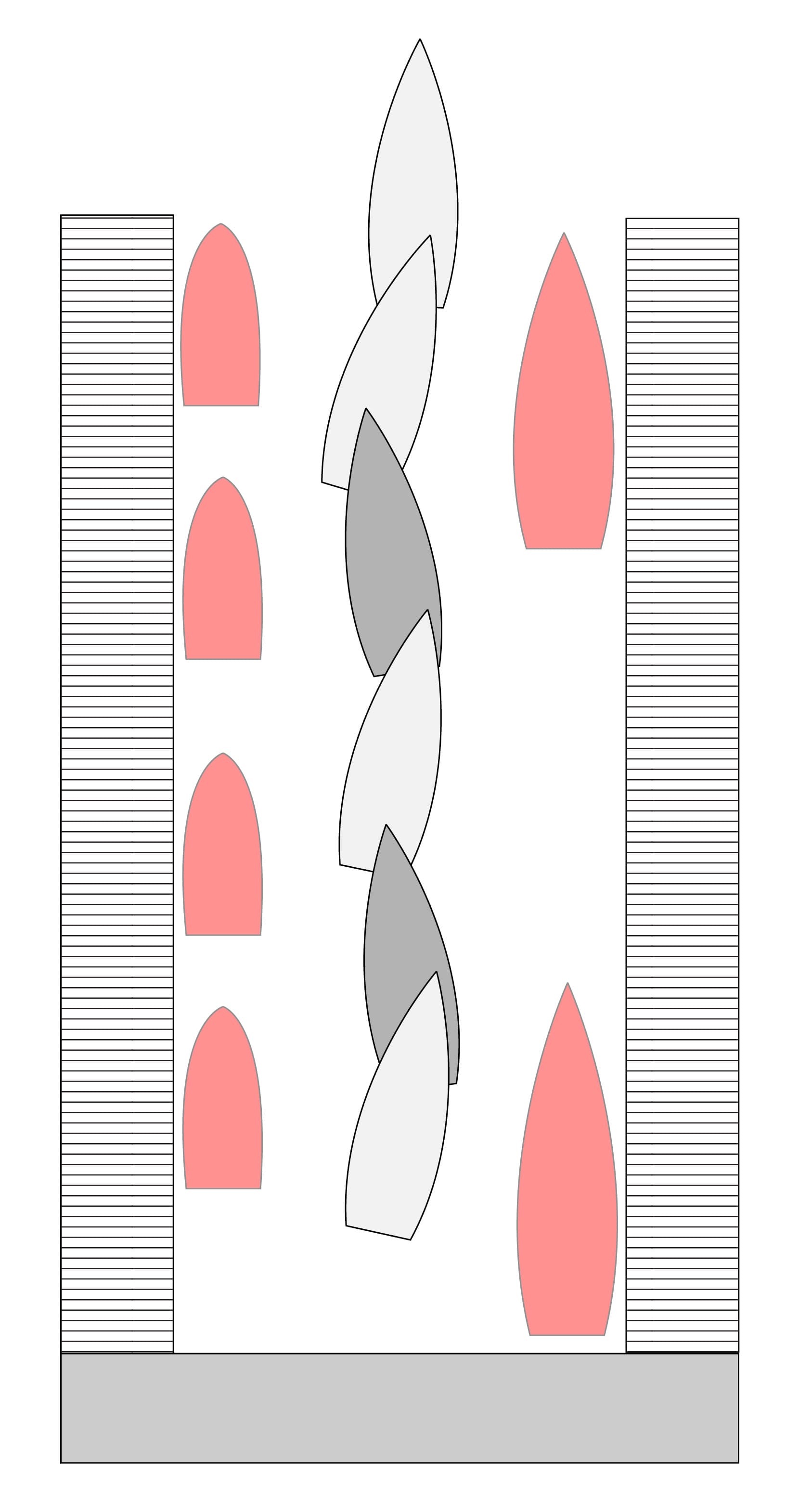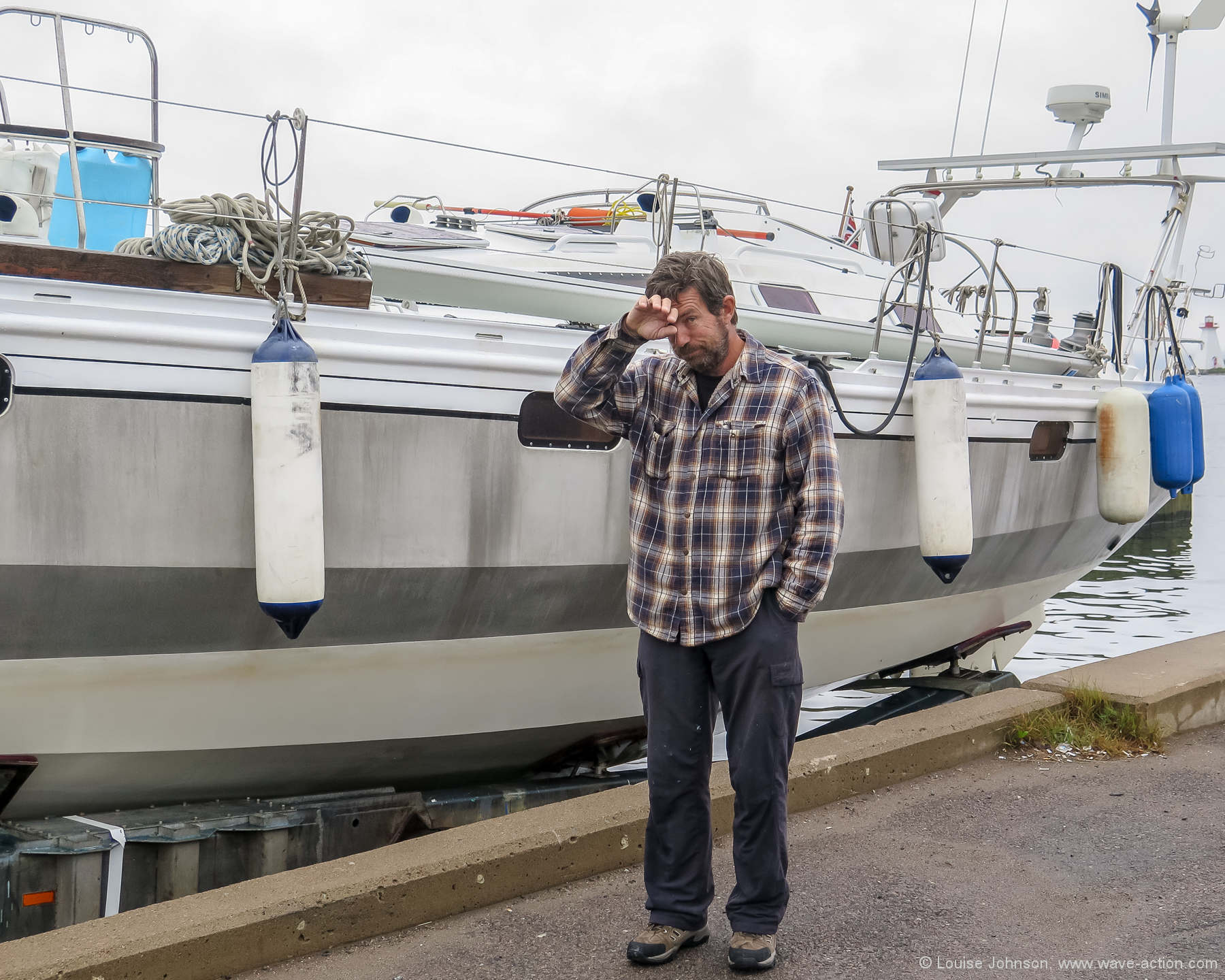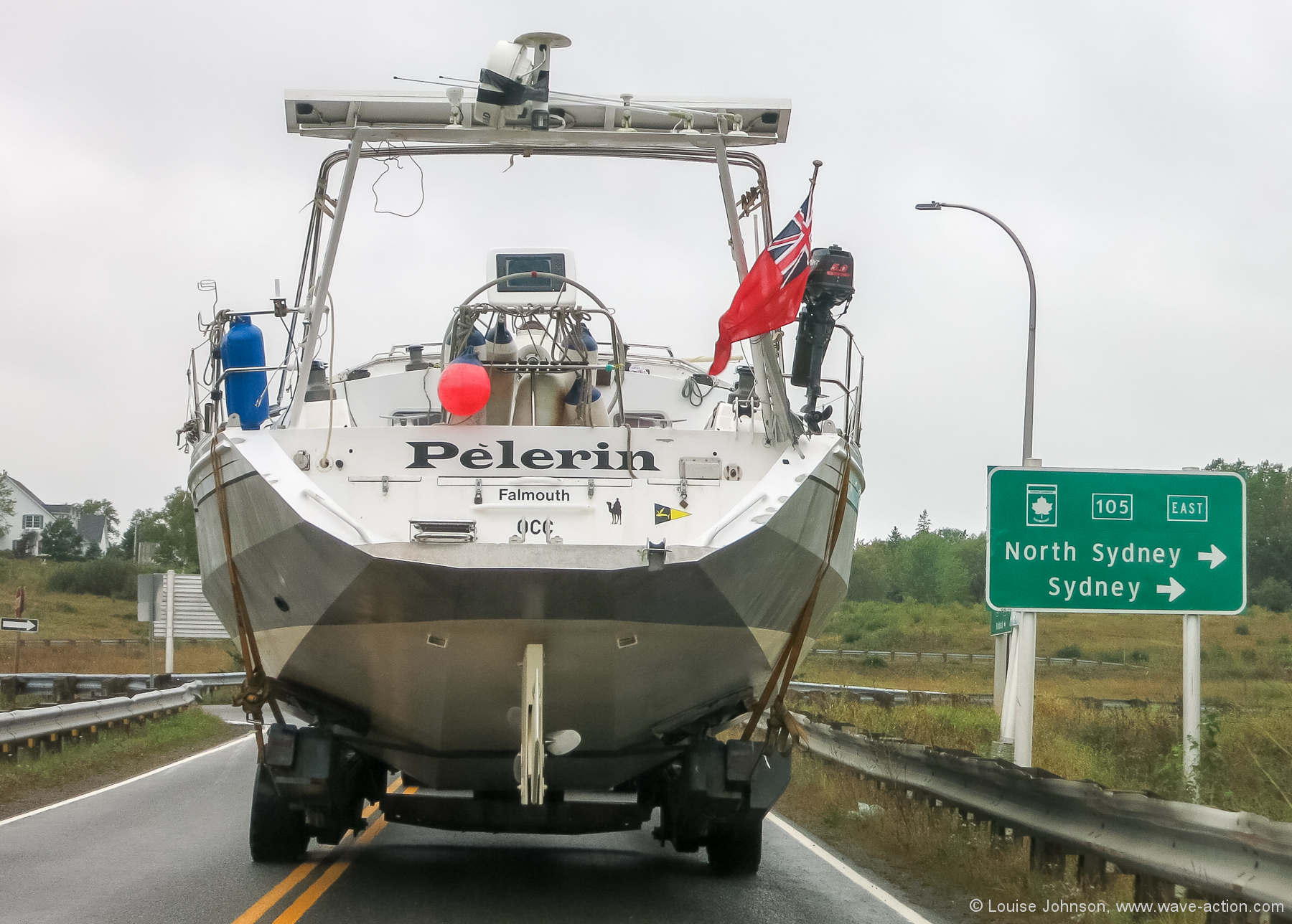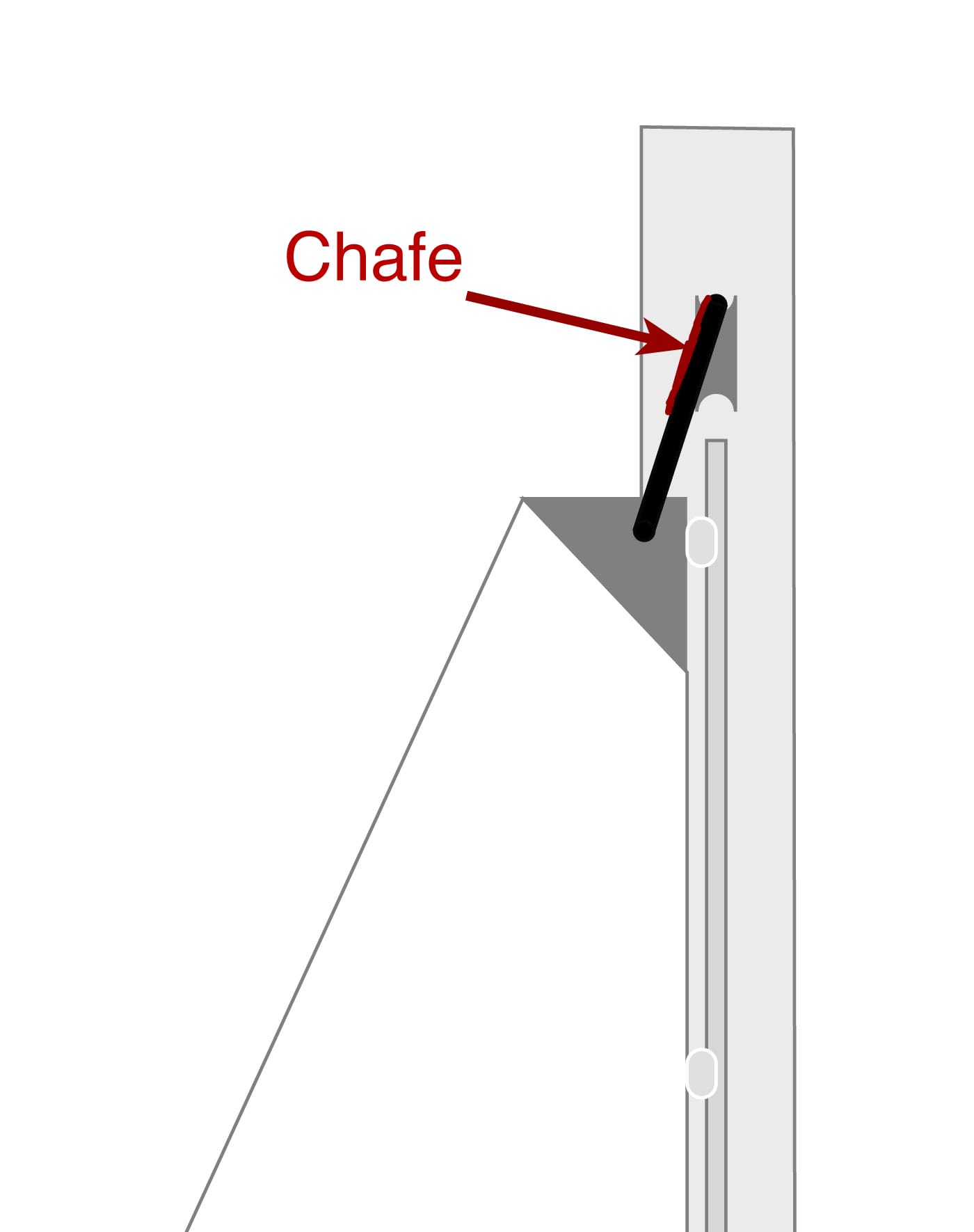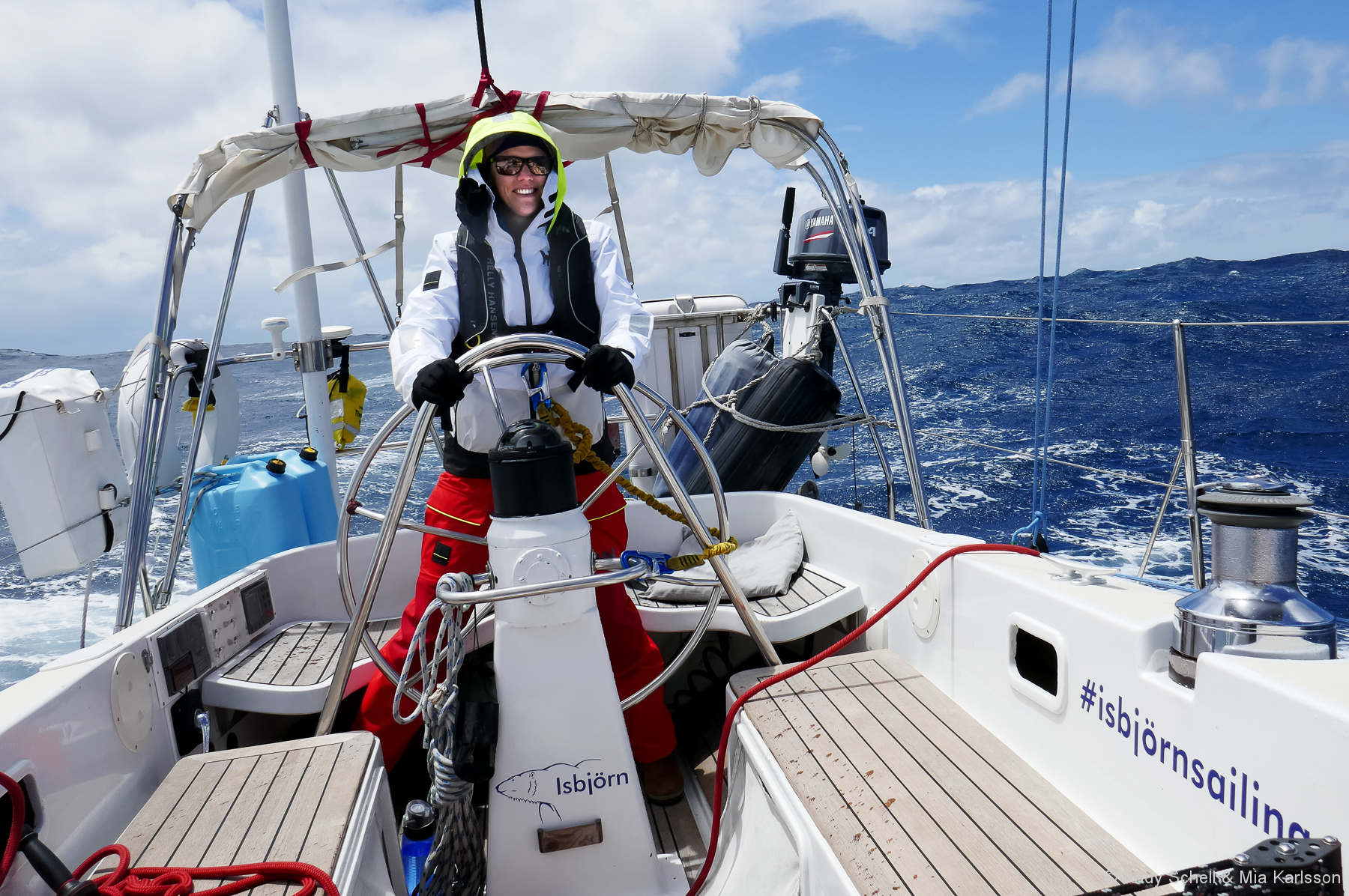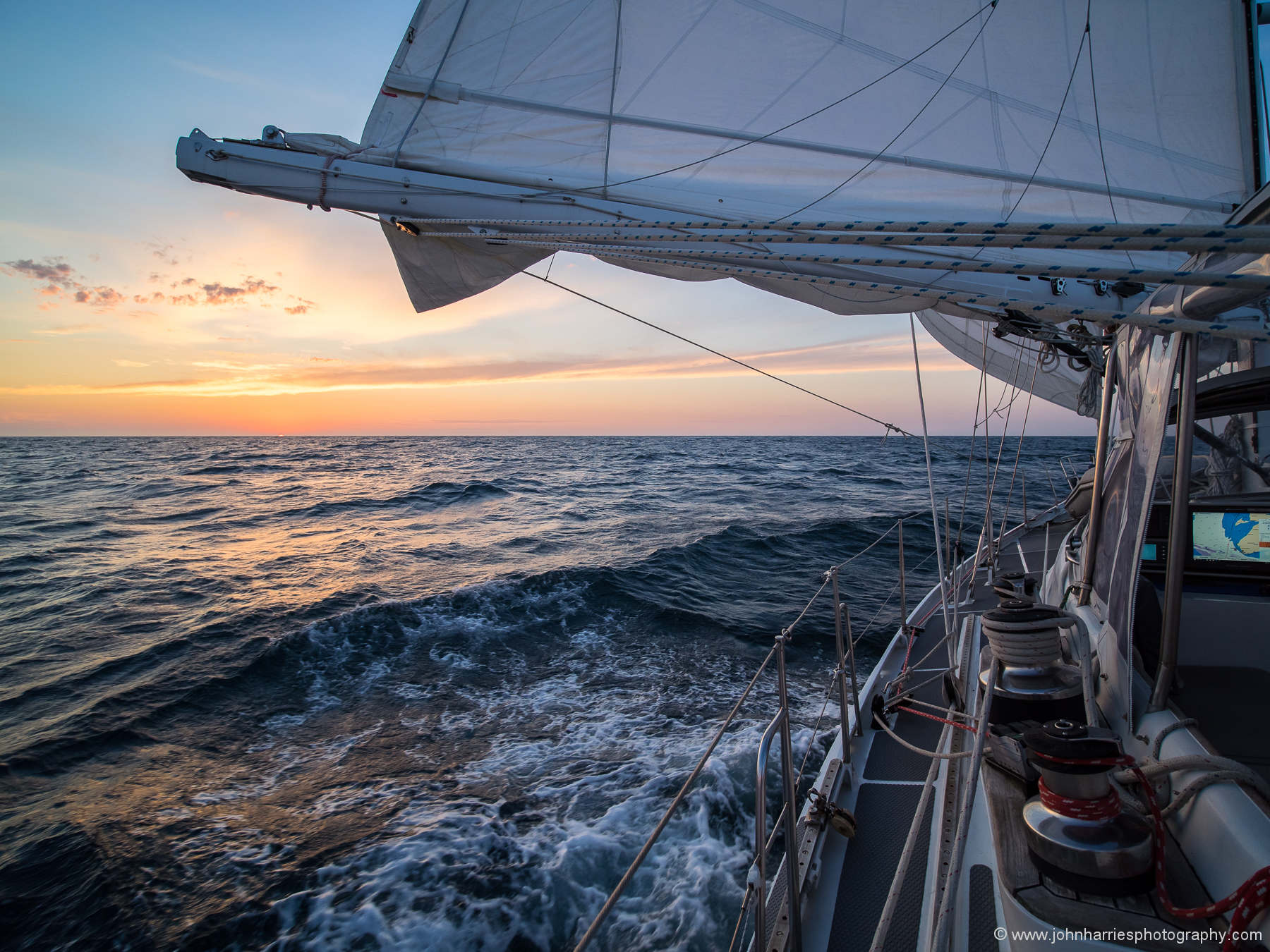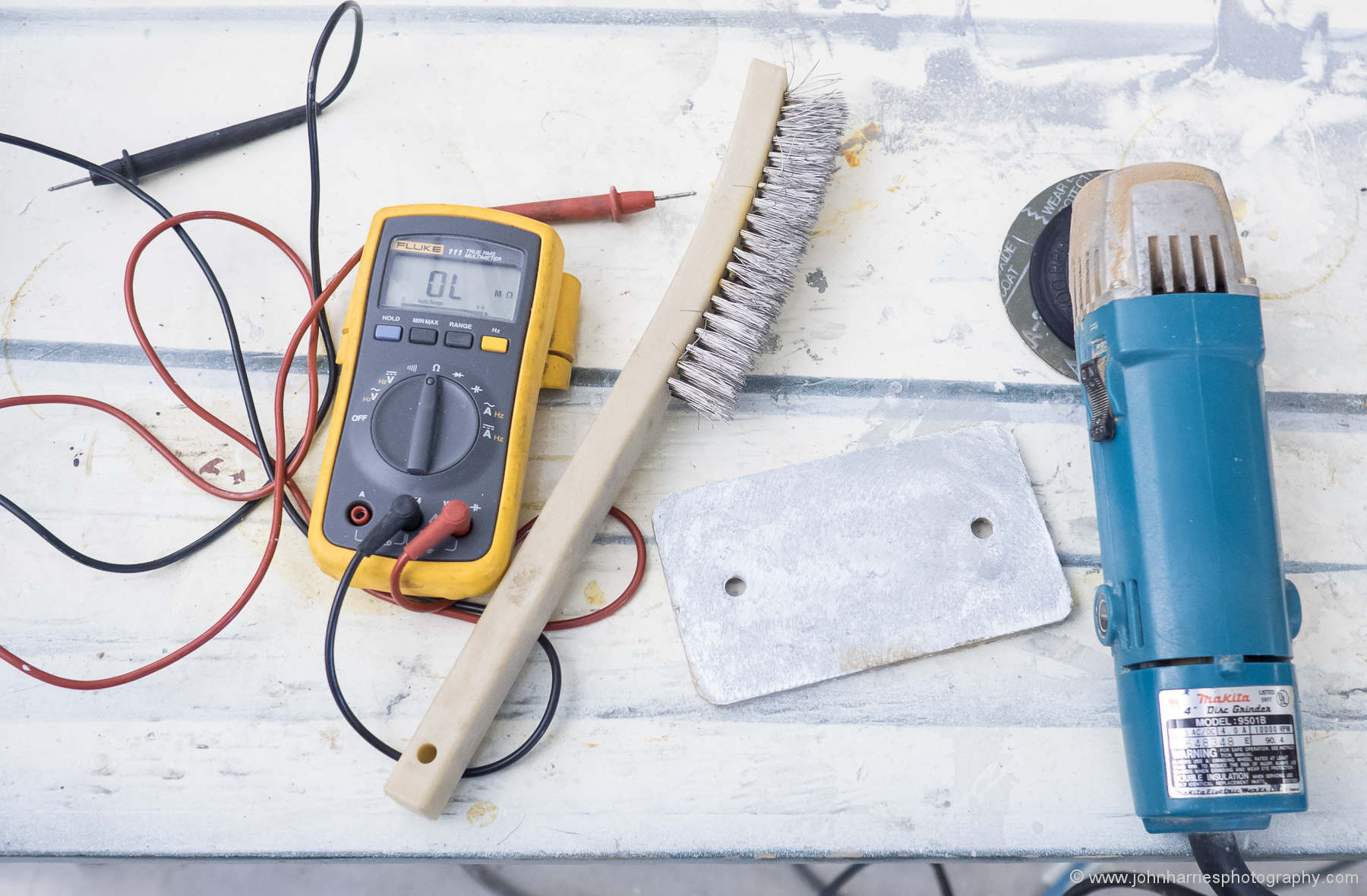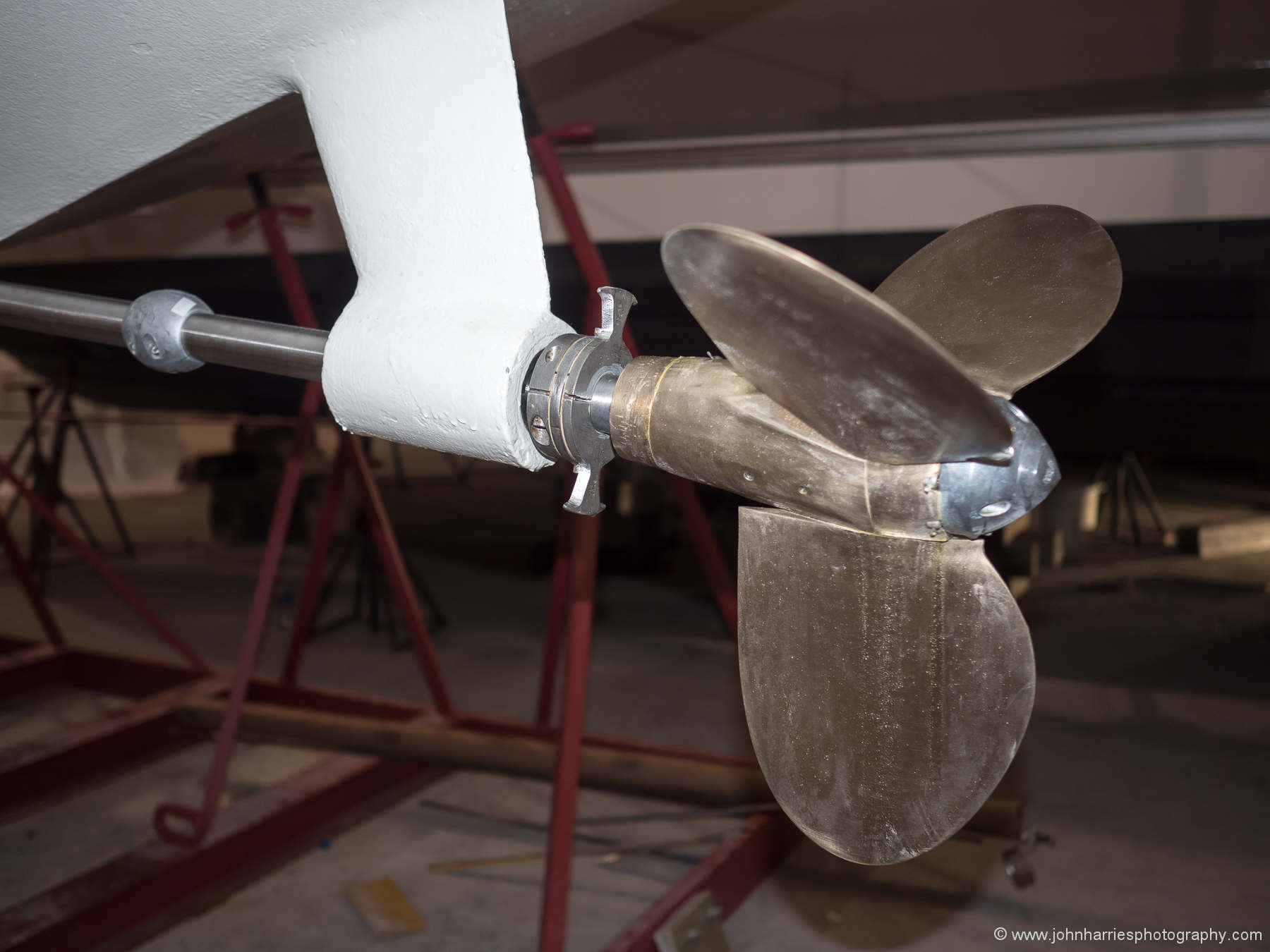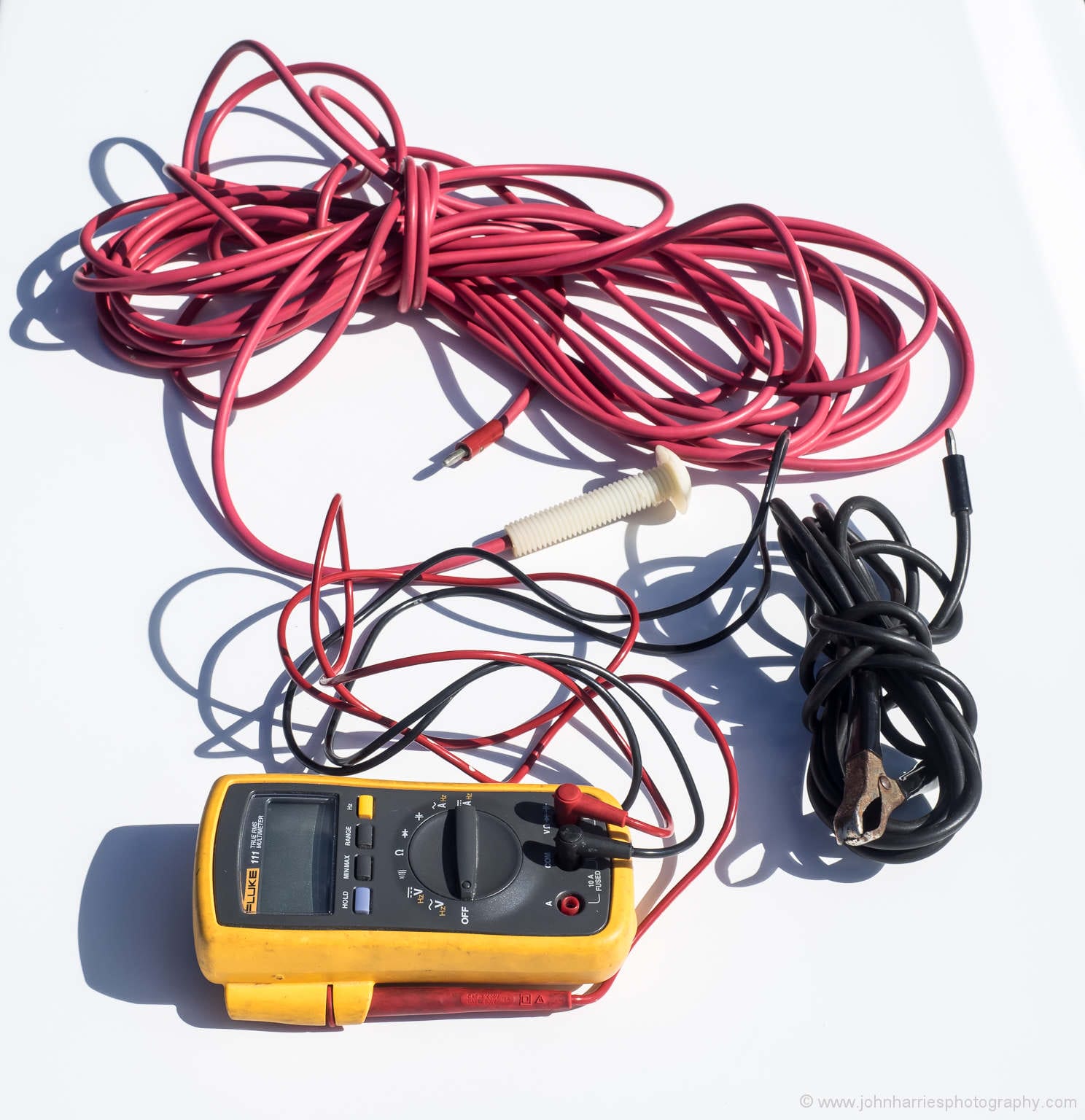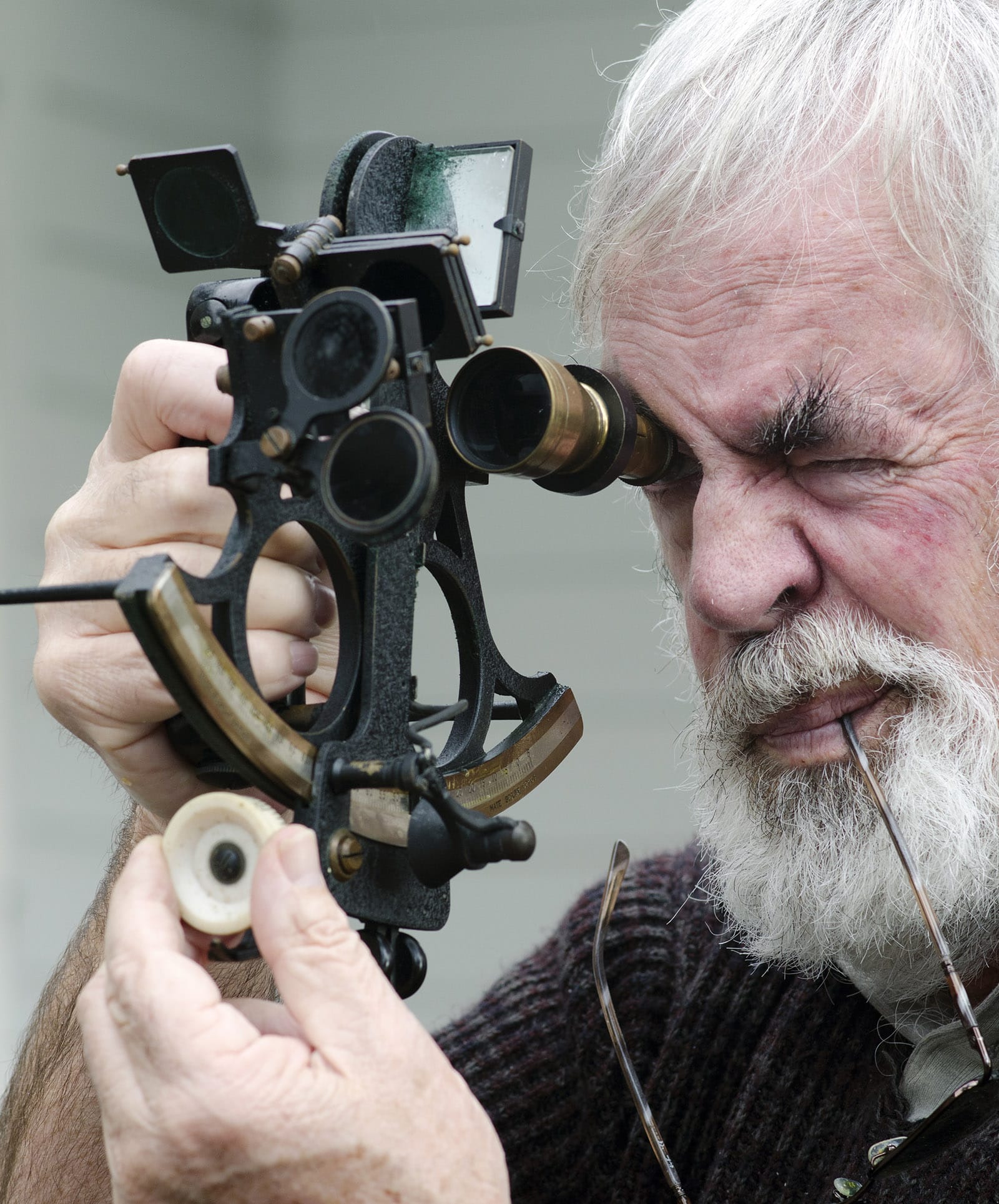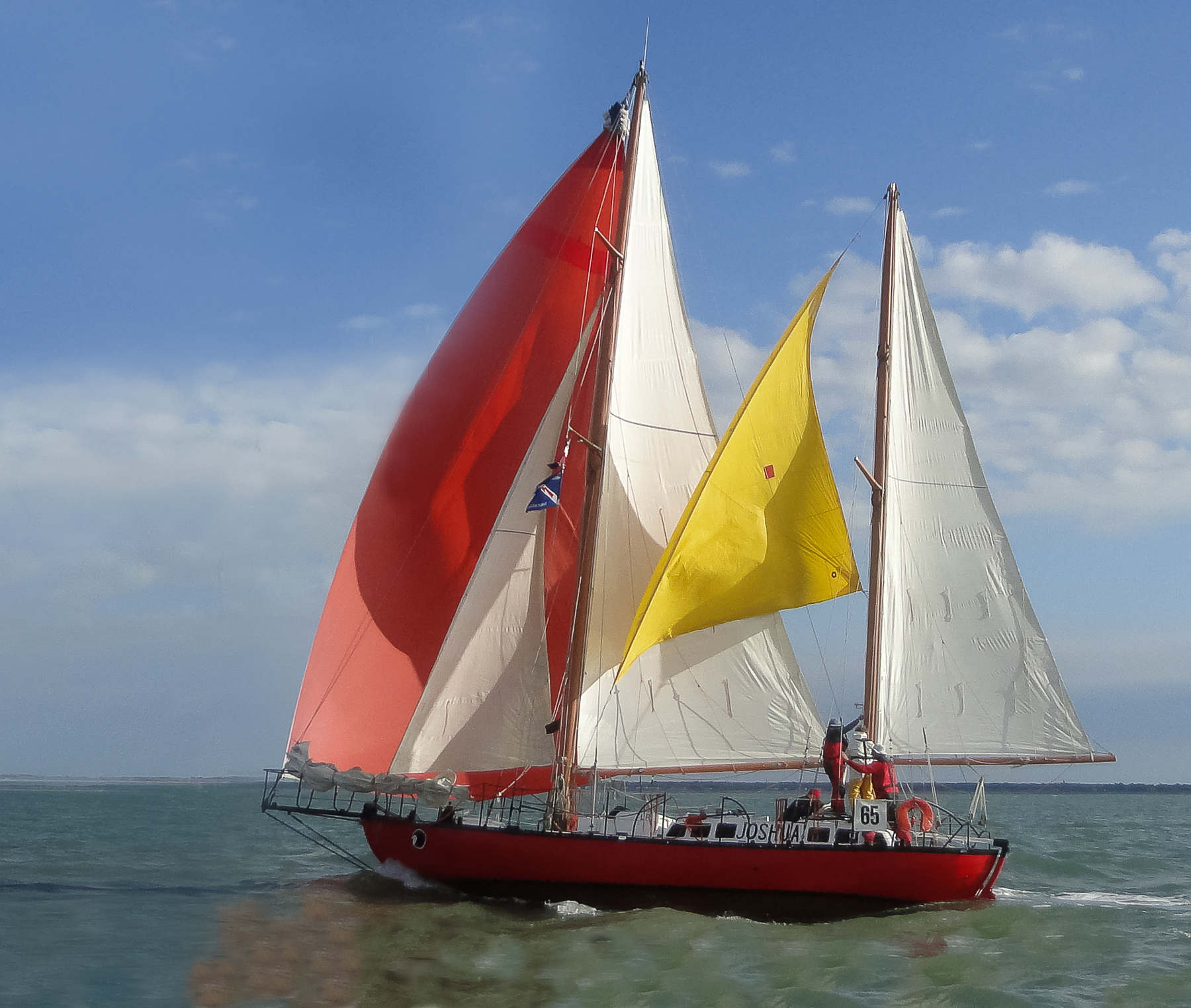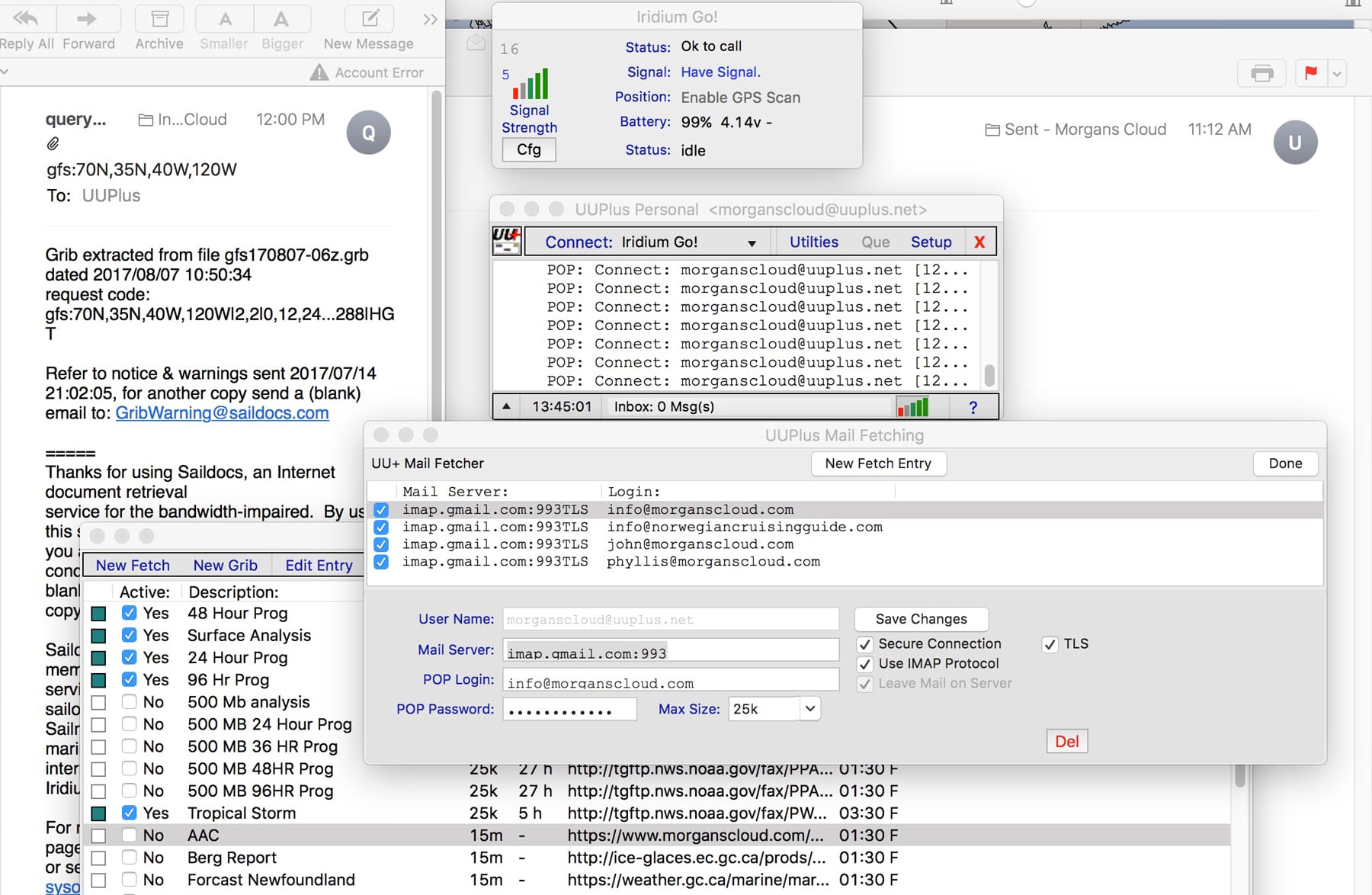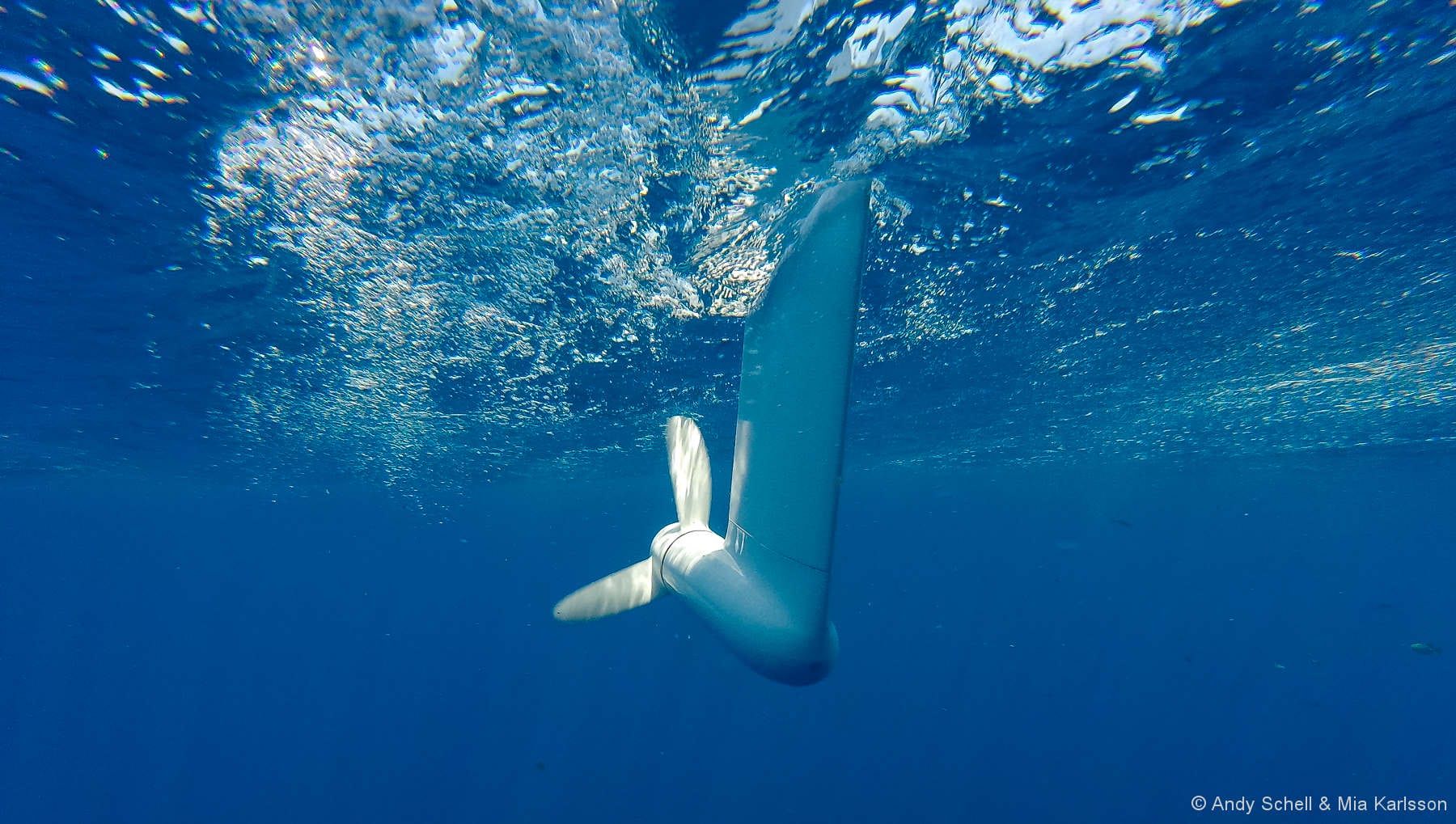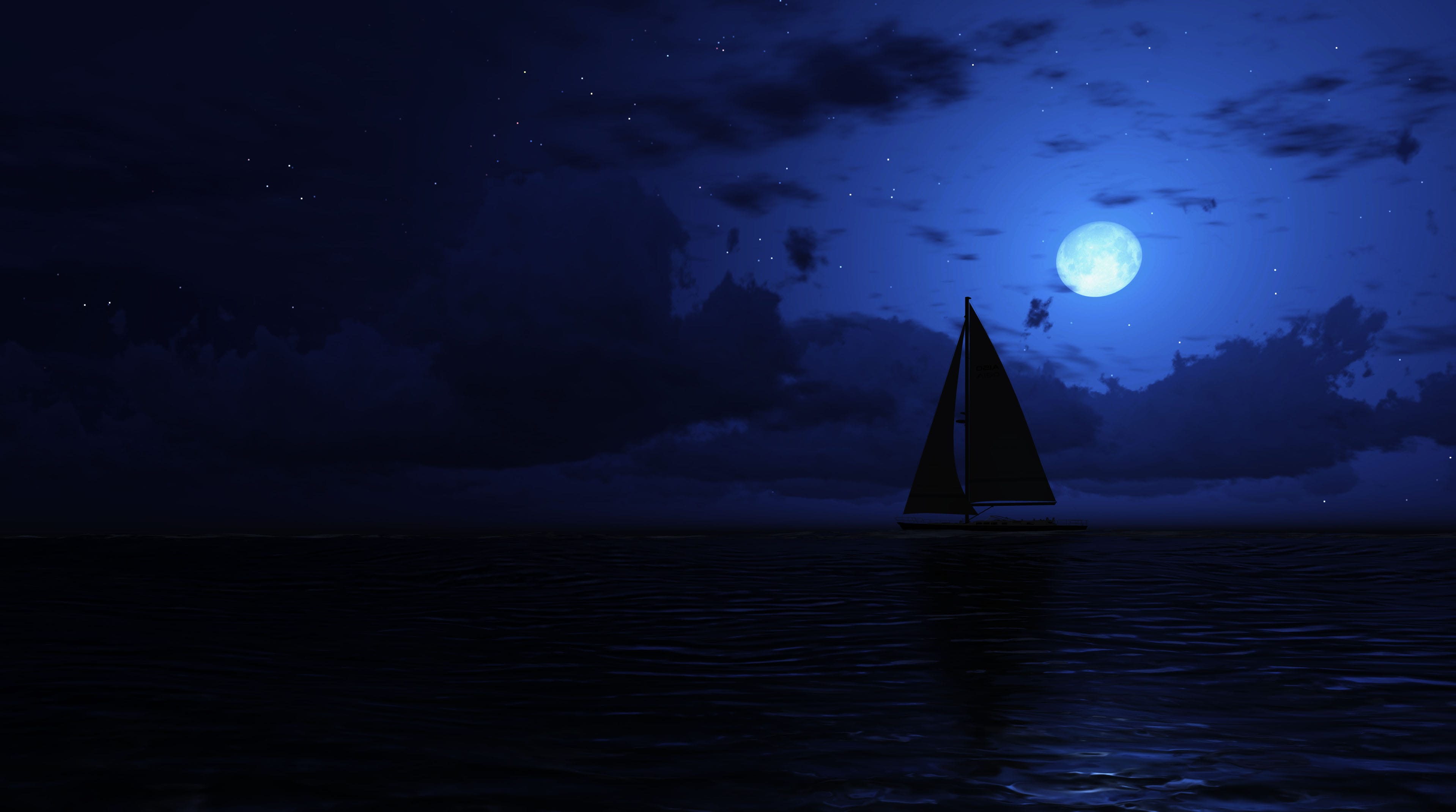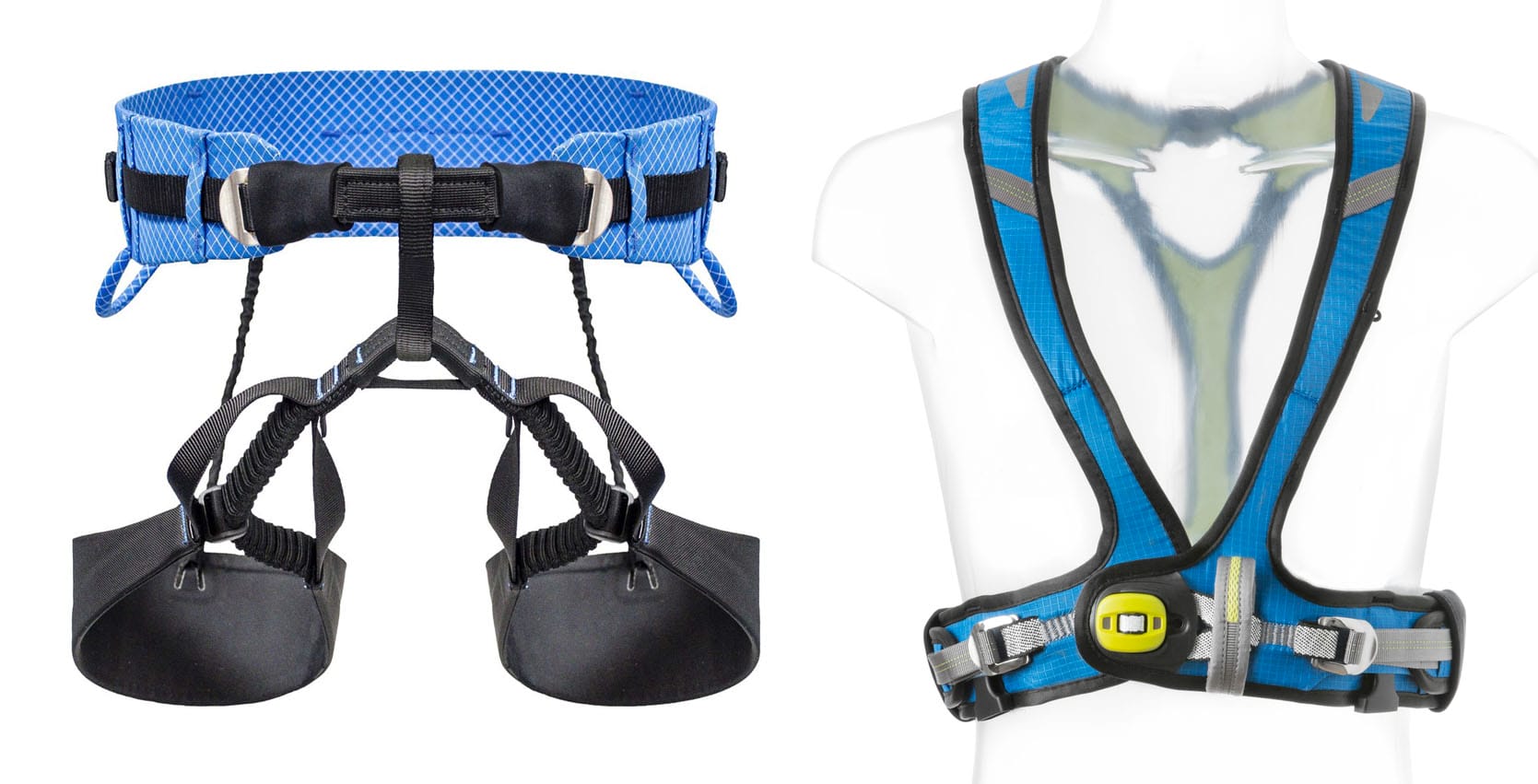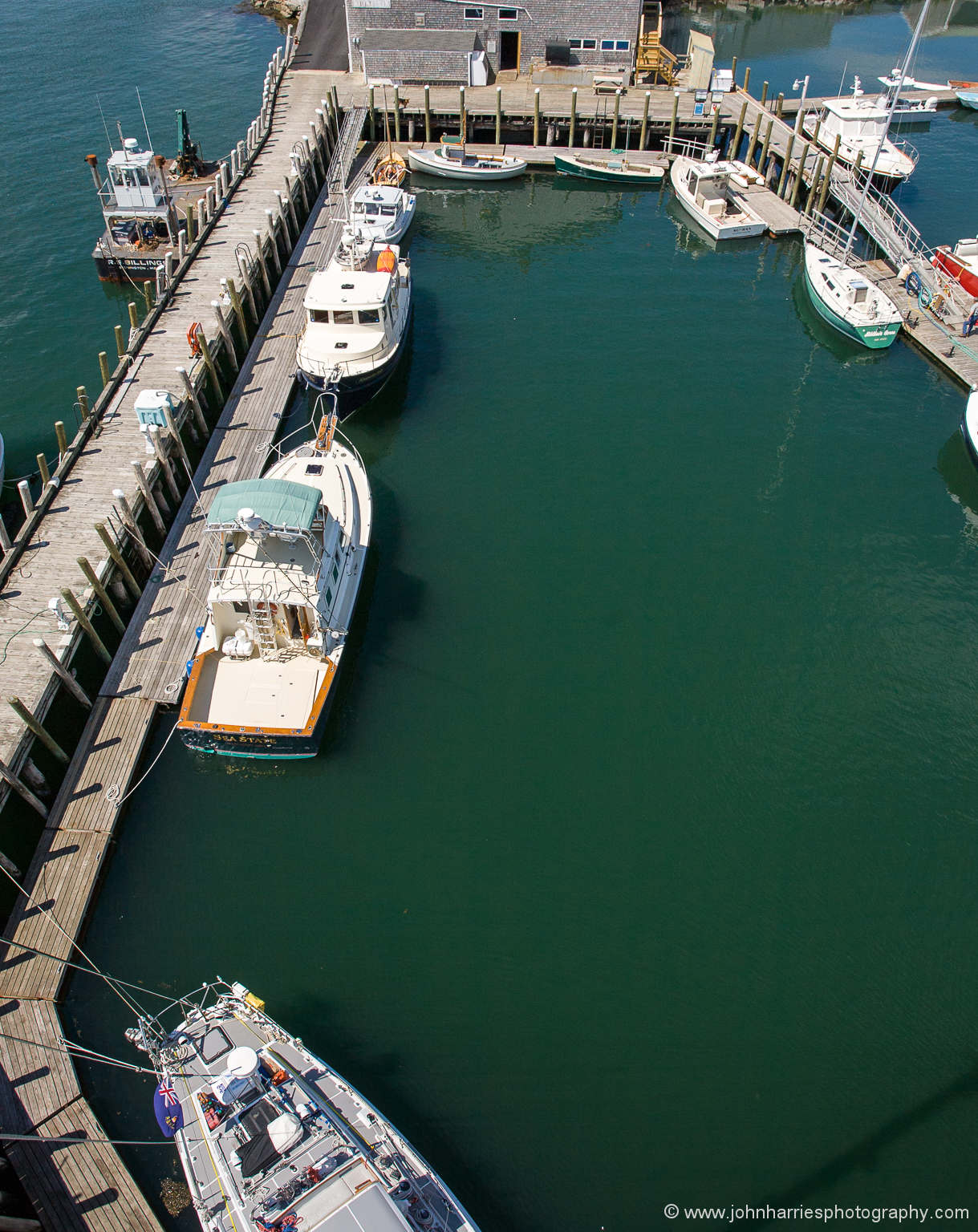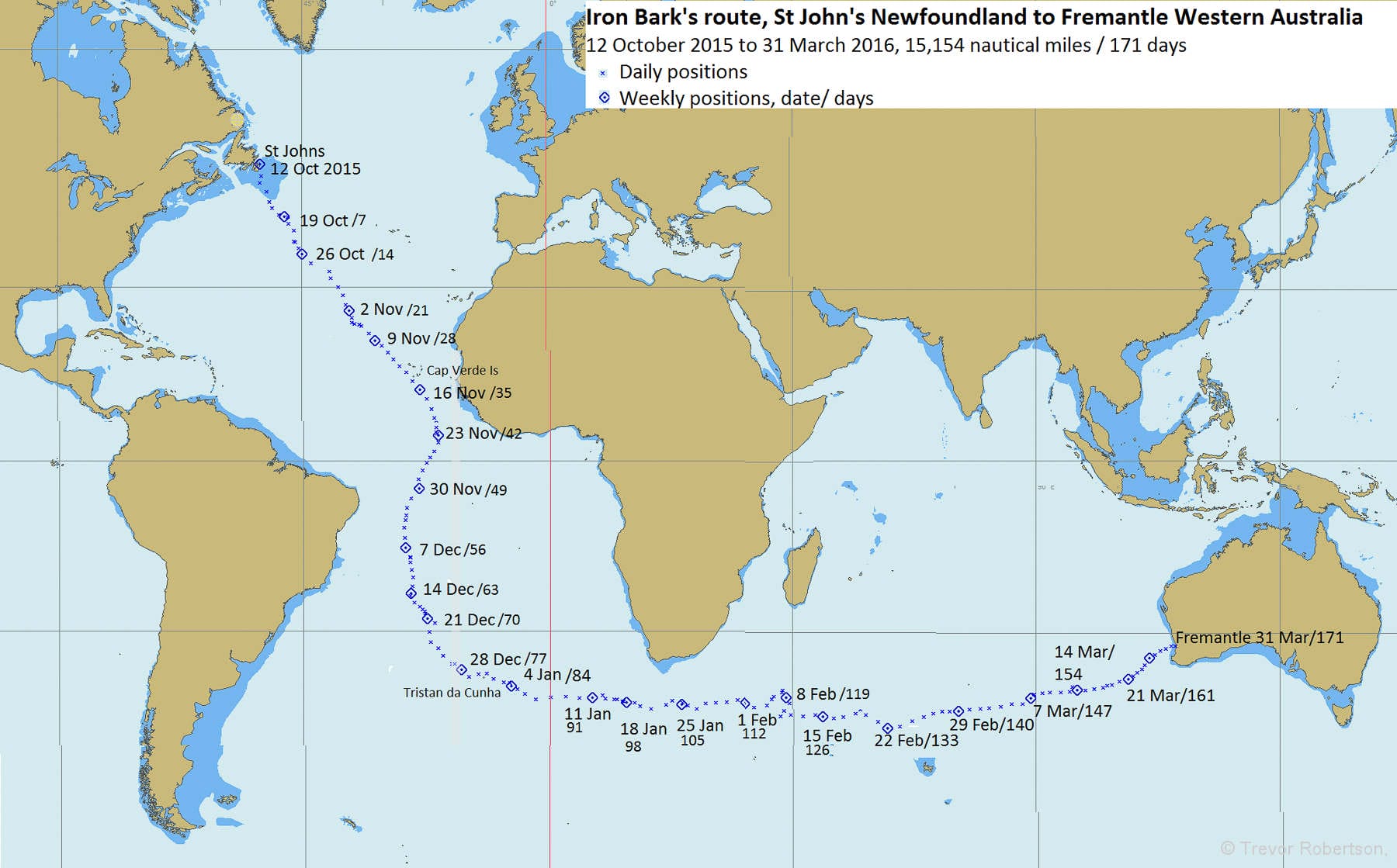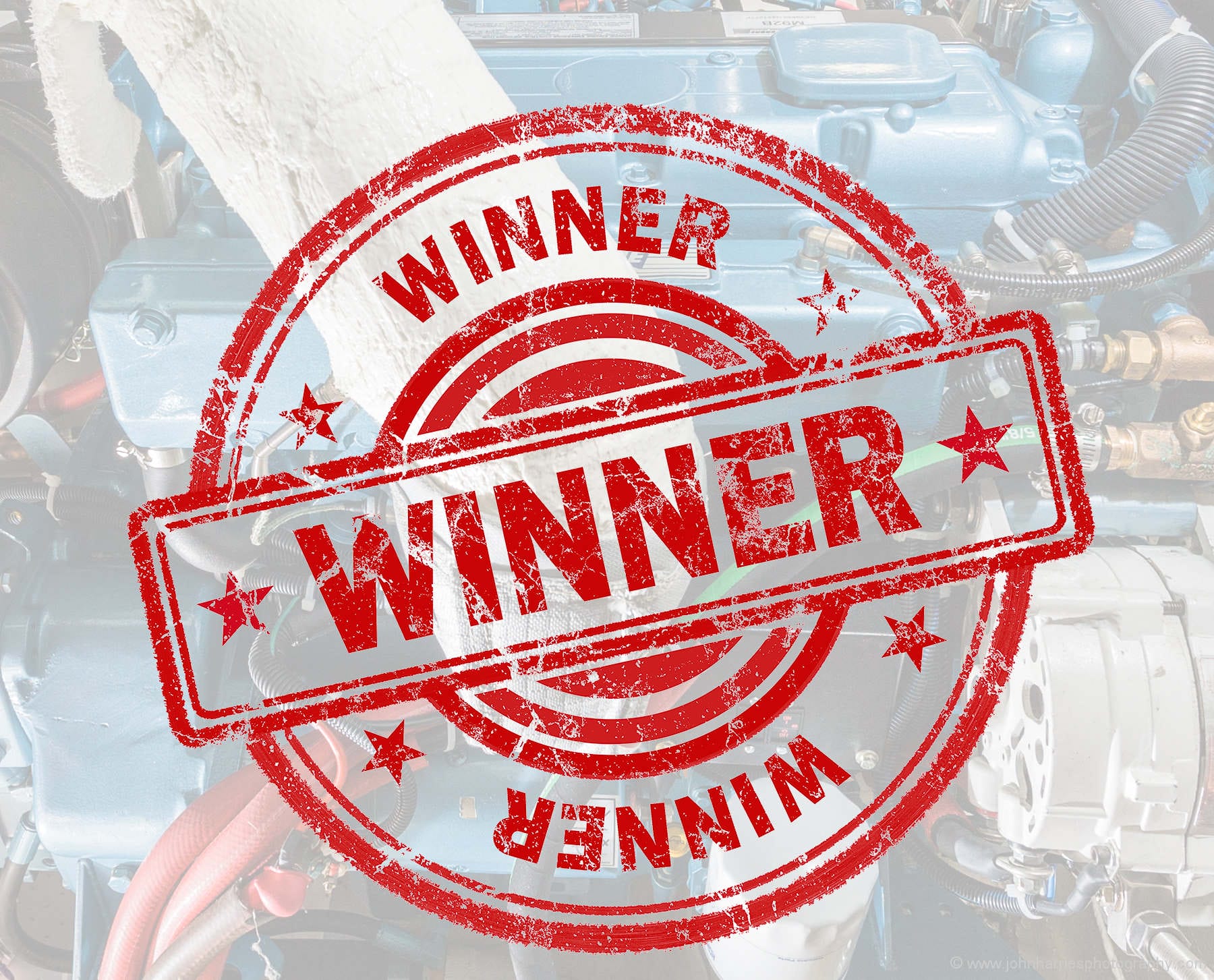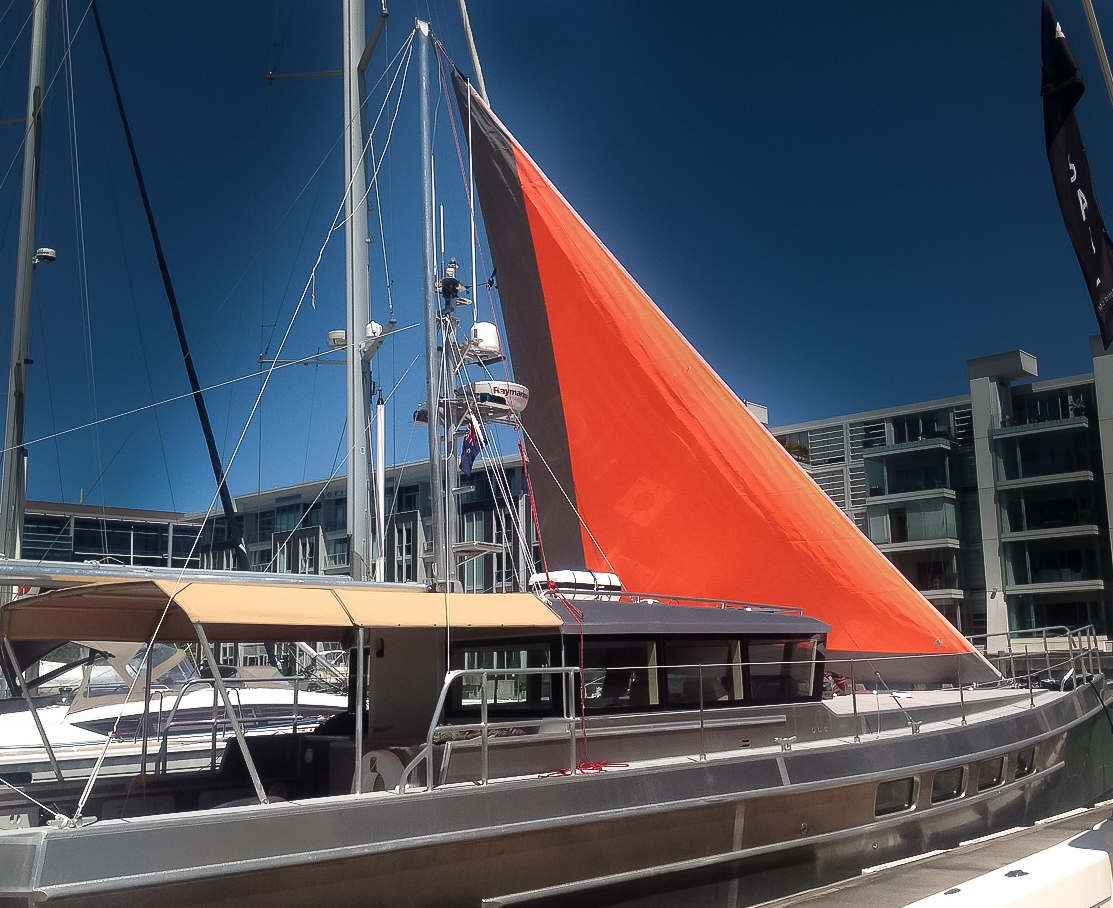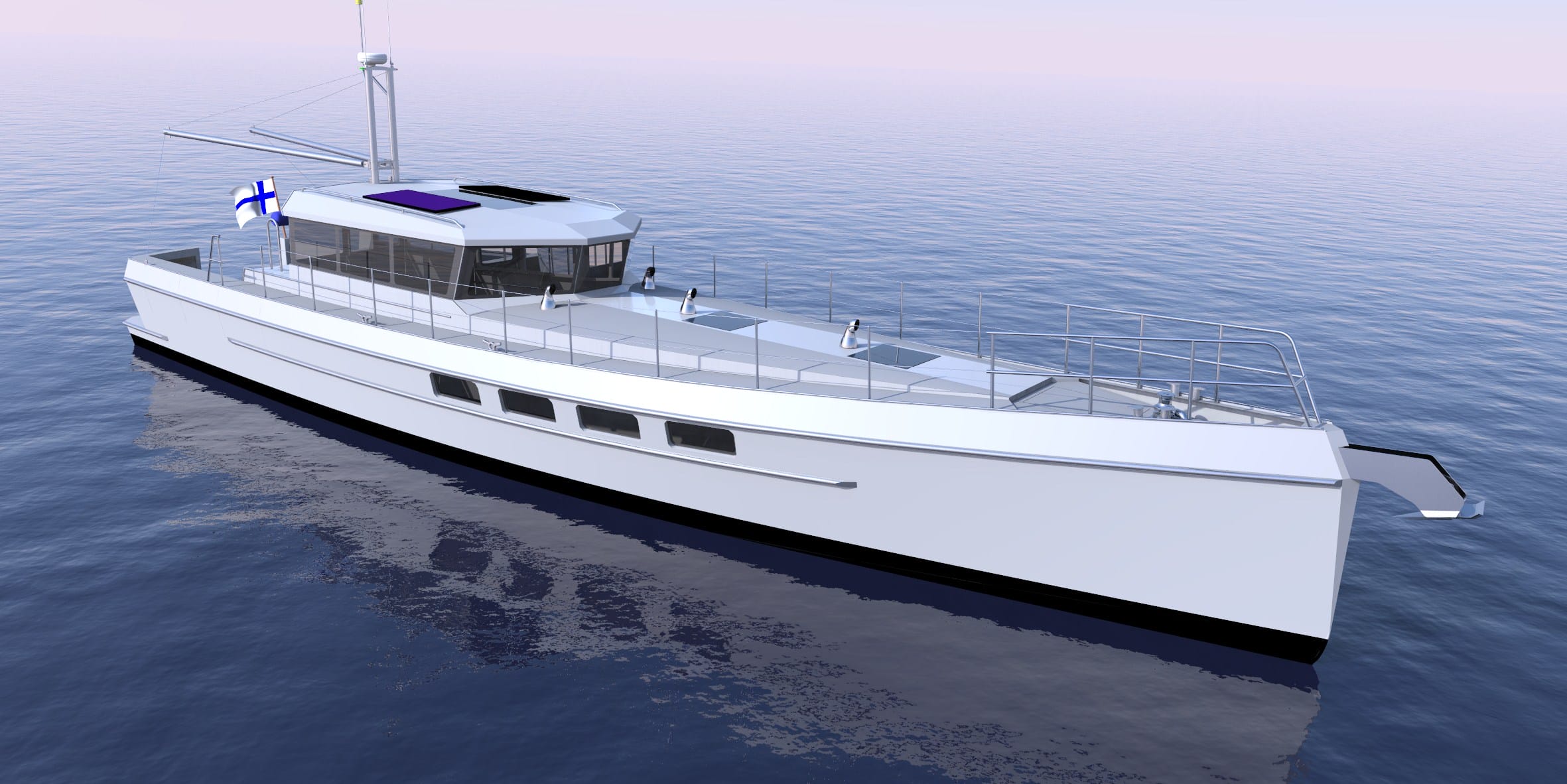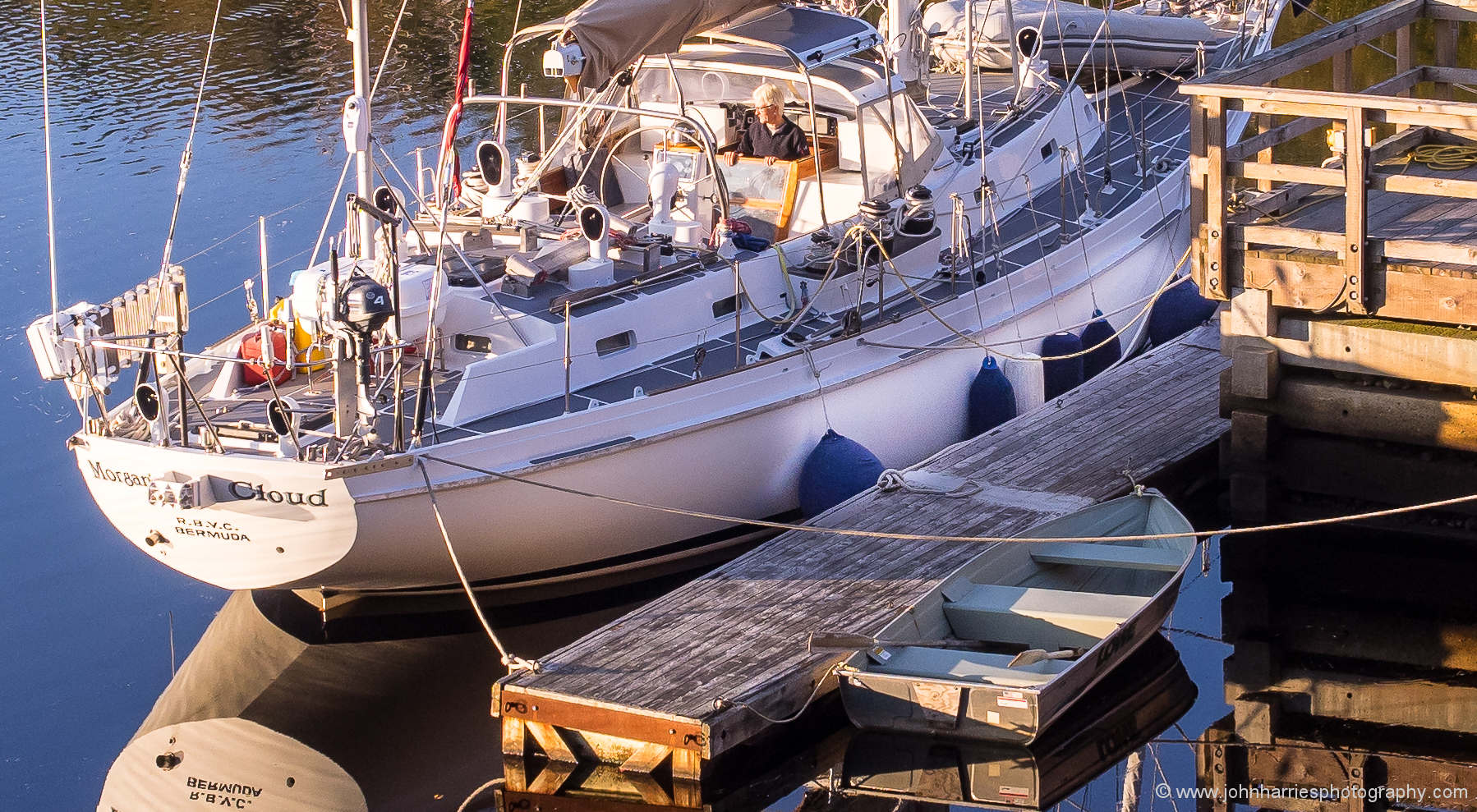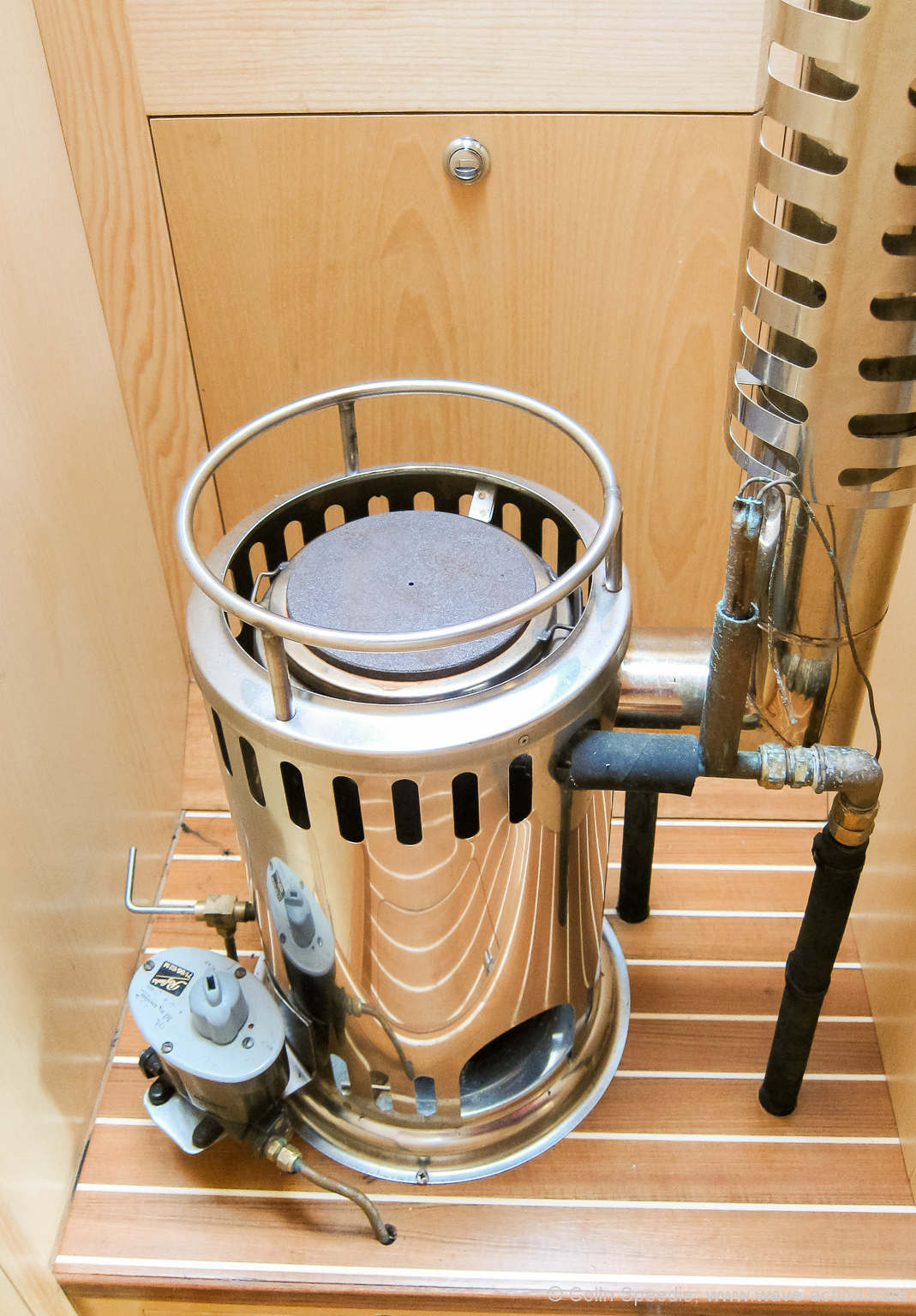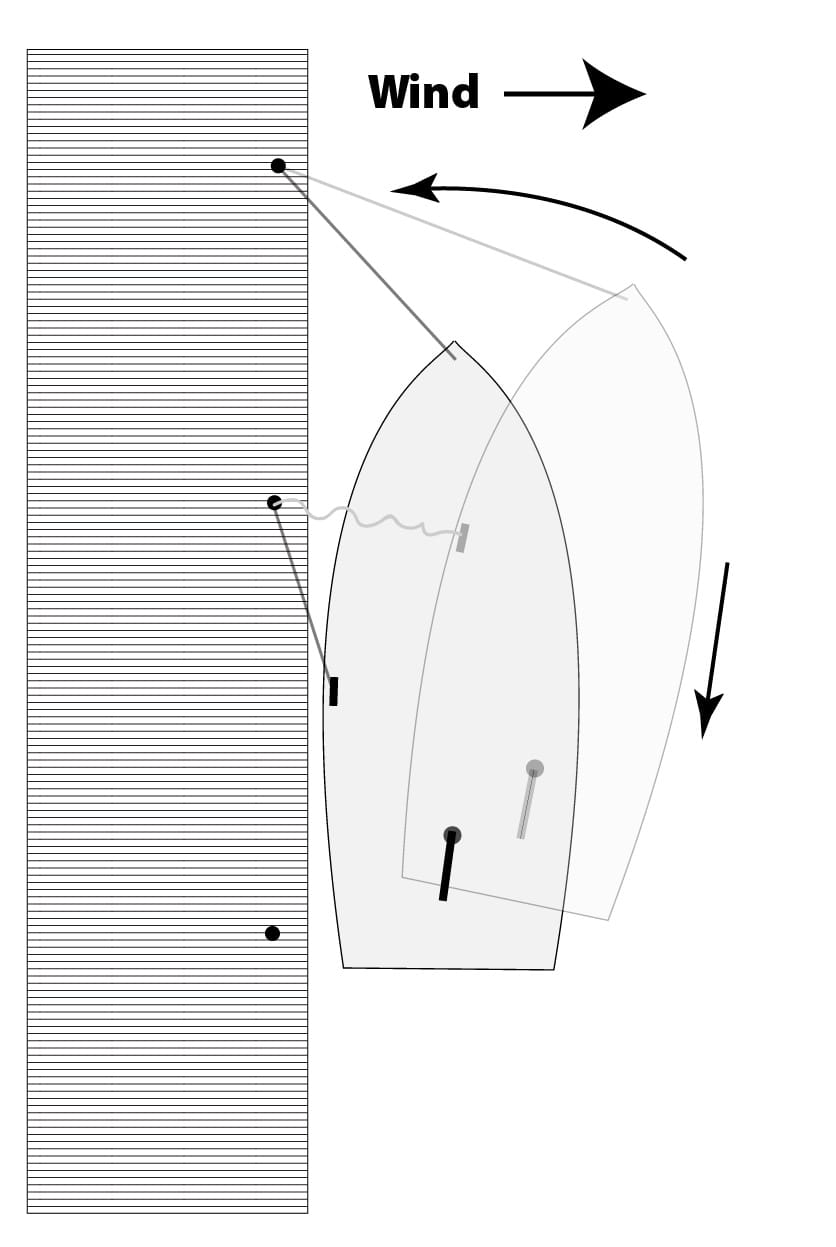MEMBERS
Click for TOC or scroll down for details
Articles in this topic:
- Sail Buying Tips
- Radar Collision Avoidance, Part 2—Turning Plotting Into Action
- Flawed Jackline Systems Revisited
- Radar Collision Avoidance, Part 1—Plotting
- TeamO Backtow Lifejacket/Harness Review
- 20 Practical Tips For Better Watchkeeping
- Reefing Tips
- 6 Tips For Mindful Watchkeeping
- How Many Reefs and How Deep?
- The Risks Of Sidedeck Jacklines Quantified
- 11 Tips For A Good Watch System
- Building a Robust and Practical Hard Dodger
- Tether Tension On A Dragging Crew Overboard
- 8 Offshore Cruising Boat & Gear Evaluation Tips
- Rigging Tips Part 2
- Spinlock Deckvest 6D Review
- Safe and Easy Offshore Sailing—When to Reef, Part 2
- Electrical Tips
- Why We Don’t Recommend Boom Brakes
- Safe and Easy Offshore Sailing—When to Reef, Part 1
- Building A Safer Boom Preventer, Part 3—The Details
- A Small-Boat Anchoring System
- When Is A Cruising Sailboat Too Big?
- Is Your Engine Properly Fused?
- Better Jacklines
- Building A Safer Boom Preventer, Part 2—Line and Gear Strength Calculator
- Building A Safer Boom Preventer, Part 1—Forces and Angles
- Surviving Storms While Coastal Cruising—21 Preparation Tips
- Rebuilding a Cobra Yacht Steering System—Reassembly
- Surviving Storms While Coastal Cruising—9 Tips for Anchorage and Harbour Selection
- Rebuilding a Cobra Yacht Steering System—Disassembly and Inspection
- Surviving Storms While Coastal Cruising—12 Strategy Tips
- 10 Reasons Why Hybrid Lithium Lead-Acid Systems are a Bad Idea
- Converting a Racing Sailboat to a Fast Cruiser—Performance and Rig
- Hurricane Mooring Weight Recommendation
- Lithium Buyer’s Guide—Budget: Economy Options
- Applying Power and Torque
- Hurricane Mooring Pennant Photo Article
- Understanding Power and Torque
- Lithium Buyer’s Guide—Budget: High End System
- Close to Home, Yet Far Away
- Wakespeed WS500 Compared To ARCO Zeus—What Matters
- 63 Cruising Boat Maintenance Tips
- Adventure 40 Electrical System—Part 1, Voltage and Batteries
- Deck Hardware Mounting Photo Essay
- Lithium Battery Buyer’s Guide—Fusing
- The Rolling Refit Continues
- Lithium Batteries Buyer’s Guide—Current (Amps) Requirements and Optimal Voltage
- The Zen of Sail Covers
- Lithium Batteries Buyer’s Guide—Balancing and Monitoring
- Selecting The Right Hull Form
- Lithium Batteries Buyer’s Guide—BMS Requirements
- Why We Have an eWincher on a Small Boat
- Electronic Chart Dangers
- Review of Ocean Signal PLB3 Against MOB1
- Weather Analysis—Part 2, Strategic
- Weather Analysis—Part 1, Tactical
- Yes, You Can Have an Offshore Sailboat For Less Than $US100,000
- Spade Anchor Failure, Update and Summary
- Weather Analysis—Hardware and Software
- Bilge Alarms And Monitoring
- Bent Spade Anchor Analysis
- 9 Tips to Assess Weather Forecast Accuracy
- Easily Driven Boats Are Better
- Sailing a New-To-Us Boat Home—What Could Go Wrong?
- Replacing Diesel-Generated Electricity With Renewables, Part 2—Case Studies
- Replacing Diesel-Generated Electricity With Renewables, Part 1—Loads and Options
- How Weight Affects Boat Performance and Motion Comfort
- Adventure 40 Cockpit 2.0
- Falmouth For Orders
- Watt & Sea Hydrogenerator Buyer’s Guide—Cost Performance
- To Sea At Last
- 10 Tips To Save Your Engine From Overheating
- Safety Inspection and Gear For a New-To-Us Boat
- Fire Extinguishers We Have Bought and Stuff We Learned
- Liferafts For Cruisers—Positioning and Mounting
- Starting With The Basics On A New-To-Us Cruising Boat
- Going Up The Mast—More Improvements
- Liferafts For Cruisers—40 Years of Real-World Experience
- Nine Autopilot Usage Tips and Hacks
- Liferafts For Cruisers—Purchase Criteria
- How To Tune An Autopilot To Steer Better—Part 2
- Finding and Buying a Dream
- Adventure 40 Deck-2.0
- How To Tune an Autopilot to Steer Better—Part 1
- Autopilot Buyer’s Guide
- Storm Strategy—Fore-Reaching
- Colin and Louise Have a New Boat
- Eight Steps to Get Ready For Lithium Batteries
- Q and A—Trucking a Boat
- A Real World Tested Tool Kit For Cruisers
- Five Boat Lift Usage Tips
- Adventure 40 Reveal—Salon and Forward Cabin
- Balancing Battery Bank and Solar Array Size
- Going Up The Mast at Sea
- Adventure 40 Reveal—Galley, Head, and Aft Storage
- Gear Leveling and Mounting Hack
- Going Up The Mast—Four Dangerous But Common Mistakes
- How To Do Amateur Engineering¹
- Going Up The Mast—Our System
- Going Up The Mast—Fundamentals
- Adventure 40 Reveal—On Deck
- Going Up the Mast—An Industrial Fall Prevention Approach
- Adventure 40 Reveal—Hull, Cockpit, and Rig
- In-Mast, In-Boom, or Slab Reefing —Performance, Cost and Safety
- In-Mast, In-Boom, or Slab Reefing—Convenience and Reliability
- Cross-Bank Battery Charging—DC/DC Chargers
- Cross-Bank Battery Charging—Splitters and Relays
- Battery Bank Separation and Cross-Charging Best Practices
- How Hard Can We Charge Our Lead-Acid Batteries?
- Choosing & Installing Battery Switches
- Battery Containment—Part 1
- 5 Safety Tips For Working on Boat DC Electrical Systems
- Building a Seamanlike Lithium Battery System
- Two More Shore Power Safety Upgrades
- 9 Tips To Select Seamanlike Gear
- Download Cruising Sailboat Rig Checklist
- When Stuff Goes Wrong At Sea
- 8 Tips To Prevent Lithium Battery Black Outs
- Why Lithium Battery Load Dumps Matter
- Cruising Sailboat Roller Furler and Track Inspection
- Positioning of Wood Plugs For Seacocks
- The True Price of Autopilots & Vane Gears
- Cruising Sailboat Rig Wiring and Lighting Inspection
- 7 Checks To Stop Our DC Electrical System From Burning Our Boat
- 11 Self-Steering Vane Gear Installation and Usage Tips
- Why Most New-To-Us Boat Electrical Systems Must Be Rebuilt
- Cruising Sailboat Running Rigging Inspection
- 12 Cruising Boat Maintenance Tips
- WakeSpeed WS500—Best Alternator Regulator for Lead Acid and Lithium Batteries
- Cruising Sailboat Standing Rigging Inspection
- Cruising Sailboat Spar Inspection
- Test Sail and Review of The Boréal 47.2
- Going Alongside (Docking)—12 More Tips and Tricks
- John Goes Sailboat Racing and Learns Stuff
- Protecting Our Boat’s Underwater Metals From Corrosion
- Going Alongside (Docking) in Current—Backing In
- Details Matter—Engine Failure at Sea
- Going Alongside (Docking) in Current—Turning in Confined Spaces
- Going Alongside (Docking) in Current—Fundamentals
- Helping a Member Choose an Anchor
- A Good First Aid Kit
- Why I Won’t Power Our Boat With a Portable Generator
- Setting and Striking a Spinnaker Made Easy and Safe
- Check Your Boat Shore Power System
- Our New Boat Selection Process—Fitness For Mission
- Cruiser’s Tool Kit—Wrenches
- 29 Tips To Get Insurance For Offshore Voyaging—Negotiating Cover
- 29 Tips To Get Insurance For Offshore Voyaging—Us and Our Boat
- Cruiser’s Power Tool Kit
- Leaving a Dock Against an Onshore Wind—Part 2
- Leaving a Dock Against an Onshore Wind—Part 1
- Getting Insurance For Offshore Voyaging—Understanding The Problem
- 14 Tips To Come Alongside Single-Handed—Part 2
- 14 Tips for Coming Alongside Single-handed—Part 1
- Integrating and Documenting NMEA 0183 and 2000 Networks
- Two More Anchor Selection Criteria
- Making Anchor Tests More Meaningful
- Choosing A Cruising Boat—Shade and Ventilation
- When Electric Drive Works For a Cruising Sailboat
- Roller Furling Headsail Risks and Rewards
- Choosing a Cruising Boat—Shelter
- Q&A—Sailboat Performance, When The Numbers Fail
- Offshore Sailboat Winches, Selection and Positioning
- Best Offshore Boat Cockpit Cushions
- Buying a Boat—A Different Way To Think About Price
- Safety: We Can’t Do Or Even Learn About It All
- Cockpits—Part 2, Visibility and Ergonomics
- Cooking Options For Live-aboard Voyagers—Part 2, Liquid Fuel
- Cooking Options For Live-aboard Voyagers—Part 1, Electric
- Cockpits—Part 1, Safe and Seamanlike
- Should Your Boat’s DC Electrical System Be 12 or 24 Volt?—Part 2
- Should Your Boat’s DC Electrical System Be 12 or 24 Volt?—Part 1
- Topping Lift Tips and a Hack
- The Danger of Voltage Drops From High Current (Amp) Loads
- Rigid Vangs
- Maretron—Better NMEA 2000 Cabling
- Efficient Generator-Based Electrical Systems For Yachts
- Is Induction Cooking For Boats Practical?
- eWincher Electric Winch Handle Review—Part 3, Reliability and Summary
- eWincher Electric Winch Handle Review—Part 2, The Competition
- eWincher Electric Winch Handle Review—Part 1, Our Testing
- Second Level Thinking About Offshore Voyaging Boats
- SeaAngel SA15 AIS Crew Overboard Beacon Compared to The Ocean Signal MOB1
- Sailboat Deck Layouts
- US$30,000 Starter Cruiser—Part 2, The Boat We Bought
- US$30,000 Starter Cruiser—Part 1, How We Shopped For Our First Cruising Sailboat
- Washing Machines: Complexity and Space Considerations
- Planning a Refit— Keel Removal and Inspection
- Q&A Backing Out of a Bow-In Med Moor
- Two New Designs From Boréal
- Stupid Alternator Regulators Get Smarter…Finally
- Sail Area: Overlap, Multihulls, And Racing Rules
- Torquing Keel Bolts
- Refits—The Radical Option
- Non-Destructive Testing of Keel Bolts
- Cruising Rigs—Sloop, Cutter, or Solent?
- Offshore Sailboat Keel Types
- Outbound 46 Review—Part 2, Keel, Rudder, Bow Thruster, and Construction
- Planning and Budgeting an Engine Rebuild or Replacement
- Outbound 46 Review—Part 1, Hull Form
- Planning a Refit—Upfront Costs
- ShoreFasts—Part 3, The Gear
- ShoreFasts—Part 2, Example Setups Plus Tips and Tricks
- ShoreFasts—Part 1, When to Use Them
- Planning a Refit—Rudders, Repair or Replacement
- Planning a Refit—The Problem With Rudders
- Yawing at Anchor, The Theory and The Solution
- Planning a Refit—Boat Parameters
- Retrieval of Dyneema (Spectra) Series Drogues Solved
- Planning a Refit—It’s a Lot About You
- Anchoring—Chain: Stoppers, Termination and Marking
- A Sail Away Offshore Cruising Boat For Less Than US$100,000—Best Hull Material
- Anchoring—Kellets
- A Sail Away Offshore Cruising Boat For Less Than US$100,000—Rudders and Keels
- A Sail Away Offshore Cruising Boat For Less Than US$100,000—Decks, Hulls and SS Fittings
- Anchoring—Snubbers
- A Sail Away Offshore Cruising Boat For Less Than US$100,000—Introduction
- Four Hand Tools I Should Have Bought Years Ago
- The Garcia Exploration 45 Compared to The Boréal 47—Part 5, Interior, Summary and Price
- The Garcia Exploration 45 Compared to The Boréal 47—Part 4, Inside Watch Stations
- Insanely Cool Anchorage Toys
- The Garcia Exploration 45 Compared to the Boréal 47—Part 3, Hull and Build
- Passage Anchorages
- The Garcia Exploration 45 Compared to the Boréal 47—Part 2, Deck and Cockpit
- The Garcia Exploration 45 Compared to the Boréal 47—Part 1, Introduction and Rig
- Ultra Anchor Review
- Which is Best For Navigation: Plotter, Computer or Tablet?
- Buying a Boat—Never Say Never
- New Satellite Communications Systems
- What We Need to Know About Moisture Meters and Wet Fibreglass Laminate
- Buying a Fibreglass Boat—Hiring a Surveyor and Managing the Survey
- A Useful, But Potentially Deadly, Feature of Navigation Apps and Plotters
- Buying a Cruising Boat—Five Tips for The Half-Assed Option
- 12 Electronic Navigation Tips From a Cruise on Someone Else’s Boat
- Coastal Passages, Part 5—On To The Finish
- You May Need a Bigger Boat Than You Think
- Costal Passages, Part 4—Keep On Plugging
- Six Things We Need to Check Before Survey
- Series Drogues: Learning From Randall Reeves
- Coastal Passages, Part 3—Off We Go
- Why Are Saildrives Even A Thing?
- Coastal Passages, Part 2—Rounding Headlands
- Six Things We Can Learn From A Night Approach That Ended on a Lee Shore
- Coastal Passages, Part 1—Making a Plan, 10 Tips
- Six Warnings About Buying Fibreglass Boats
- Rocna Resetting Failures and Evaluation of Vulcan and Mantus
- Learn From The Designers
- Refitting an Old Boat Can Work…For Some
- Specifying Primary Anchor Size
- SPADE, SARCA Excel, or Some Other Anchor?
- UV Protection For Roller Furling Sails
- Nigel Calder’s Integrel, Part 2—Is It Really Better Than a Generator?
- Nigel Calder’s Integrel, Part 1—What You Need To Know
- SARCA Excel Anchor—A Real World Test
- Cruising Boat Electrical System Design, Part 3—Specifying Optimal Battery Bank Size
- Cruising Boat Electrical System Design, Part 2—Thinking About Systems
- Cruising Boat Electrical System Design, Part 1—Loads and Conservation
- Alternatives to Chainplates For Drogue Attachment…Or Not
- Stuff We Gotta Do—The Anchor Roller Version
- Ocean Passaging—Turning Back Is Hard To Do
- Anchor Chain Catenary, When it Matters and When it Doesn’t
- Which Old Salts Should We Listen To? 10 Ways To Decide—Part 2
- Colin on Anchoring
- Which Old Salts Should We Listen To? 10 Ways To Decide—Part 1
- Storm Survival FAQ
- AIS Crew Overboard Beacons—Setting Up The Boat Alarms Right
- Just Get a Series Drogue Designed By Don Jordan…Dammit!
- Amidships “Preventers”—A Bad Idea That Can Kill
- Rogue Waves Are Not Bad Luck
- 5 Ways We Are Updating Our Thinking On Fire Fighting
- Battery Monitors, Part 3—Calibration and Use
- Battery Monitors, Part 2—Recommended Unit
- Battery Monitors, Part 1—Which Type Is Right For You?
- Battle Testing a Jordan-Designed Series Drogue—Round 2
- Rigging Tips Part 1
- 10 Things That Are Common On Offshore Cruising Boats…But Shouldn’t Be
- Rig Tuning, Part 5—Sailing Tune
- Battery Bank Size and Generator Run Time, A Case Study
- Rig Tuning, Part 4—Mast Blocking, Stay Tension, and Spreaders
- Rig Tuning, Part 3—6 Steps to a Great Tune
- Rig Tuning, Part 2—Understanding Rake and Bend
- Rig Tuning, Part 1—Preparation
- Battery Options, Part 2—Lead Acid
- Battery Options, Part 1—Lithium
- Two Dangerous Rigging Mistakes
- Boréal Yachts—Looking To The Future
- Boréal Yachts—Eight Years On
- 8 Things I Learned From a Lazy Man’s Galley Makeover
- Time to Stop Using And Selling Tethers with Gibb-style Hooks
- Crew Overboard Recovery—Our Replacement For Quick Stop
- Crew Overboard Recovery, Is The Quick Stop Bogus?
- Which Lifejacket Auto-Inflator Should We Select?
- Should We Wear Lifejackets or Harnesses, Both, Neither?
- Apps to Manage Boat Maintenance and Cruises
- Managing Boatyard Costs—Part 2
- Managing Boatyard Costs—Part 1
- Smartphone (CrewWatcher) or AIS-Based Crew Overboard Beacons?
- Severe Weather Probability Forecast Product
- Coming Alongside (Docking)—Backing In, Part 2
- Coming Alongside (Docking)—Backing In, Part 1
- Surviving The Boatyard—Part 2
- Surviving The Boatyard—Part 1
- Running Rigging Recommendations—Part 2
- Weather Routing In Action
- Running Rigging Recommendations—Part 1
- 29 Aluminum Boat Care Tips—Part 3
- Automated Weather Routing—Part 1, The Tools
- 29 Aluminum Boat Care Tips—Part 2
- Q&A, Coming Alongside (Docking) With Twin Rudders
- 29 Aluminum Boat Care Tips—Part 1
- Seven Skills We DON’T Need to Go Cruising
- The Golden Globe Race—The Boats and the Refits
- We Love The Way Our Anchor Drags
- Iridium GO! and UUPlus, Real World Use Review
- Watt & Sea Hydro Generator Review
- Can We Really Be Seen By Ships at Night?
- Crew Overboard Prevention—Use of Climbing Harnesses
- Coming Alongside (Docking)—Taming the Wind
- Coming Alongside (Docking)—The Final Approach
- Coming Alongside (Docking)—Manoeuvring in Close Quarters
- Battle Testing a Jordan-Designed Series Drogue—Round 1
- Get-Home Backup For Offshore Motorboats—Part 3, The Winner
- Get-Home Backup For Offshore Motorboats—Part 2, The Options
- Get-Home Backup for Offshore Motorboats—Part 1, Is It Even a Thing?
- Boat Heating—Part II
- Determining When Heaving-To Is Dangerous
- 10 Ways to Make Your Boat Easier to Bring Alongside a Dock
- Boat Heating—Part I
- Rigging The Spring That Makes Docking Easy, Or an Alternative
- Coming Alongside (Docking) in 4 Easy Steps
- Transitioning From Heaved-to To a Series Drogue
- Series Drogue Durability Problems
- The Right Tethers To Keep Us Aboard—Part 2, Construction and Hardware
- The Right Tethers To Keep Us Aboard—Part 1, A Mix
- 8 Radar Use Tips
- Three Tips to Make Your Cruising Boat Fault Tolerant
- 11 Tips for Safe Navigation With Phones and Tablets
- Navigation in Fog—Underway
- Navigation in Fog—Preparation
- Navigating in Fog—The Tools
- The Artnautica LRC 58 Adventure Edition Offshore Motorboat
- Thinking About Better Offshore Motorboats
- Jacklines: Materials, Fabrication and Installation
- The Unknown Unknowns
- An Easy Way to Avoid Engine Failures
- Designing For Dux Rope Rigging—A Paradigm Shift—Part 2
- Dynice Dux, Part 1: Practical Low-Stretch Rope Rigging For Offshore Sailboats
- What Marine Engine Duty Ratings Mean To You
- A Sailor’s Cockpit Enclosure—Part 2
- A Sailor’s Cockpit Enclosure—Part 1
- Keeping Things Tasty—Tips For Food Storage (With No Refrigeration) & Meal Preparation
- Keeping Things Tasty—A 36,000-Mile Lesson In Provisioning
- The Perfect Anchor Roller
- The Three Keys To Cruising Happiness
- Q&A—Are Battery Desulphators a Good Idea?
- Hoisting the Mainsail Made Easy—Simplicity in Action
- Ten Tips To Fix Weather Helm
- How Batteries Charge (Multiple Charging Sources Too)
- Maiden Voyage of The Boreal 55—What Worked and What Didn’t
- One Simple Law That Makes Electrical Systems Easy to Understand
- Things I’ve Learned From Three Refits That Will Help You
- Giving a Tough Old Ocean Greyhound a New Purpose
- Refitting a Wauquiez Hood 38
- A Trans-Atlantic Boat For Less Than US$100,000
- How To Select The Best Power and Propeller Settings For Your Engine
- How To Stop Killing Your Engine With Kindness
- Controllable Pitch Propellers (CPPs)
- The Ultimate Guide to Using Iridium Handsets and GO!
- Going Cruising—Being Realistic About You, 4 Tips
- Iridium GO! Review—6 Myths Busted and a Purchase Recommendation
- 4 Great Tips From a Professional Meteorologist
- Mooring Your Dinghy While Ashore, Made Easy
- “Eala Bhan” Sails Home, Part III
- Keeping Safe From Chart Inaccuracies
- “Eala Bhan” Sails Home, Part II
- Five Tips For Choosing Weather Information to Believe…And Pay For
- “Eala Bhan” Sails Home—The Maiden Voyage of The Boréal 55
- Marine Electronics Recommendations—Communications
- Marine Electronics System Recommendations
- Two Tips to Make Your First Ocean Passage as Skipper Safe and Fun
- Anchor Tests—The Good, The Bad, and The Downright Silly
- Cutter Rig—Optimizing and/or Converting
- Cutter Rig—Should You Buy or Convert?
- 12 Reasons The Cutter Is A Great Offshore Voyaging Rig
- Propeller Efficiency
- Ten Ways to Make Propane Safer
- Boat Maintenance—Don’t Go Broke Saving Money
- Boréal 47—An Owner’s Experience
- Third Anchors, Storm Anchors and Spare Anchors
- Understanding An Engine Fuel Map
- Better Powertrains For Auxiliary Sailboats and Motorboats
- Downwind Sailing—Poling Out The Jib
- Downwind Sailing, Tips and Tricks
- Kedge (Secondary Anchor)—Recommended Type and Size
- Boat Maintenance—What’s Your Screwup Tolerance?
- Tools and Techniques For Managing Dissimilar Metals on Cruising Boats
- The Crazy Fools…Who Don’t Drown
- The Only Five Knots You Need to Know
- Attainably Adventurous Children
- Marine Electronics Recommendations—Radar
- Yawing at The Anchor, an Alternative Cure
- Spare Parts—Which To Buy and How To Keep Track Of Them
- Reefing From The Cockpit 2.0—Thinking Things Through
- The Secret Life Of Your GPS
- Getting Your Mojo Back
- A Real Sailor’s Motorboat Launched
- The Two Biggest Lies Yacht Brokers Tell
- Q&A: Safety of Large Pilothouse Windows
- Download Your Gift eBook
- Rustler Yachts: Maybe There’s Hope Yet?
- The Loss of “Team Vestas Wind”
- 9 Tips To Make Unstepping a Sailboat Mast Easier
- Our Mainsail Is Our Friend
- 6 Tips To Stop Marine Electronics From Ruining Your Cruise
- Perfect or Good Enough?
- Staying Attached To The Boat
- Install A Wash-down Pump—And Save Money!
- Motorboating and Sailing Compared—Part 2
- Motorboating and Sailing Compared—Part 1
- Crash Pump
- The Right Way to Buy a Boat…And The Wrong Way
- Estimating The Cost of Maintaining a Cruising Boat
- You Need More Than Money
- The World’s Best Bilge Pump Switch
- Loss of Yacht “Tao”
- Do You Need A Generator?
- Real Numbers For Electric And Diesel-Electric Drives
- Five Ways That Bad Boats Happen
- Backup Systems
- Do You Still Need Paper Charts?
- Protecting Against Lightning Strikes
- John & Phyllis’ 36 Immutable Rules of Seamanship
- Lithium Ion Batteries Explained
- Two Yacht Losses, Many Lessons Learned
- 20 Tips To Get Anchored and Stay Anchored
- 10 Tips To Install An Alternator
- 10 Tips to Help You Get Out There Cruising
- Artnautica 58—Design Analysis
- Design Parameters For an Ideal Sailor’s Motorboat
- Selecting a Chain Grade
- Mainsail Handling Made Easy with Lazyjacks
- Do We Need Watertight Bulkheads?
- Impact Resistance—Two Collision Scenarios
- Impact Resistance—How Hull Materials Respond to Impacts
- The Real Reason to Use a Harness and Tether
- A Sailor’s Motorboat
- Characteristics of Boat Building Materials
- Summary And Conclusions For Heavy Weather Offshore Section
- Companionway Integrity In A Storm
- Real Life Storm Survival Story
- Storm Survival Secret Weapon: Your Engine
- Surviving A Lee Shore
- Series Drogues: Learning From Tony Gooch
- Jordan Series Drogue Retrieval—An Alternative From Hal Roth
- Jordan Series Drogue Attachments And Launch System
- Jordan Series Drogue Retrieval System
- When Heaving-To Is Dangerous
- Heaving-To
- Goals For A Heavy Weather System
- Introduction—We Need A System
- 8 Tips For a Great Cruising Boat Interior Arrangement
- Cycle Loading—8 Tips for Boat and Gear Purchases
- Electric or Diesel-Electric Drives for Voyaging Boats
- Two Anchors Done Right
- Cyclical Loading: Why Offshore Sailing Is So Hard On A Boat
- Harnesses and Lifejackets and How to Use Them
- Keeping The Water Flowing
- The Risks of Falling Overboard at Sea
- Is It a Need or a Want?
- One Anchor or Two?
- Hydro Power
- Solar Power
- Wind Generators
- Renewable Power
- A Dangerous Myth about Reefing
- Choosing a Spot
- Laziness Never Goes Unpunished
- Pitfalls to Avoid When Buying a New Voyaging Boat
- The Case For Roller-Furling Headsails
- Are Refits Worth It?
- The Case For Hank On Headsails
- Thinking About a Steel Boat?
- A Reluctant Voyager?
- Tips For Receiving Weather Forecasts
- New Engine, The Proof is in The Voyage
- Tips For Receiving GRIBs
- Choosing an Anchorage
- Tips For Receiving Weather Fax
- It’s A Forecast, Not A Prophecy
- The Importance Of The Big Picture
- A Windlass That Makes The Grade
- Things to Know About Anchor Chain
- Serve Your Apprenticeship
- Priorities In Preparation
- Making Life Easier—Roller Reefing/Furling
- Clear The Decks For Action
- Making Life Easier—Storm Jib
- How To Use An Anchor Trip Line
- The Beauty Of Simplicity
- Chart Plotters And Autopilots, Never The Twain Should Meet
- Perkins M92B, Initial Report Card
- Equalizing Batteries, The Reality
- Storm Preparation, All Chain On Deck
- Anchor Swivels, Just Say No
- Q&A: Hybrid Rope And Chain Anchor Rodes
- AC Chargers For Lead Acid Batteries
- How Lead Acid Batteries Get Wrecked and What To Do About It
- Engine Installation—The Devil Is In The Details
- Test Sail On A Boréal 44
- Rudder Options
- Boréal 44 Design
- A Boat Designed For The High Latitudes
- New Engine For “Morgan’s Cloud”—What We Chose
- Selection Criteria For The New Engine For “Morgan’s Cloud”
- Three Navigation Mistakes That Can Wreck You
- Knowing Where It’s At
- Boréal Sailboats–An Introduction
- Don’t Forget About The Sails
- Managing Ocean Currents
- Gale And Storm At Anchor Or On A Mooring Check List
- Swept-Back Spreaders—We Just Don’t Get It!
- Carbon Fiber Masts and Lightning: Myths, Assurances And Risks
- Carbon Fiber Mast, Costs and Benefits
- The Benefits Of Carbon Fibre Masts
- How To Home Build a Hard Dodger For an Offshore Sailboat
- Cockpit Dodger For an Offshore Sailboat
- Q&A: Staysail Stay: Roller Furling And Fixed Vs Hanks And Removable
- Anchor Rode Questions and Answers
- There’s No Excuse For Pounding
- A Motorsailer For Offshore Voyaging?
- At What Age should You Stop Sailing And Buy a Motorboat?
- It’s Often Better to Anchor Than Pick Up a Mooring
- Reefing Questions and Answers
- A Prairie Woman Goes To Sea
- Taming The Wimp Within
-
Rigging Tips Part 1
58 CommentsReading Time: 11 minutesMembersRead more: Rigging Tips Part 1John puts his lazy streak on display with five rigging hacks to do less work, but still do things right.
-
10 Things That Are Common On Offshore Cruising Boats…But Shouldn’t Be
54 CommentsReading Time: 7 minutesMembersRead more: 10 Things That Are Common On Offshore Cruising Boats…But Shouldn’t BeIt’s always easier not to fix our boats right, and using the excuse that everyone does it like this is a tempting way to excuse doing extra work and spending more money, but the sea does not recognize excuses.
-
Rig Tuning, Part 5—Sailing Tune
15 CommentsReading Time: 9 minutesMembersRead more: Rig Tuning, Part 5—Sailing TuneIn the previous four parts of this series on mast tuning, we got all the basics taken care of, now we just need to go sailing to complete a great tune.
-
Battery Bank Size and Generator Run Time, A Case Study
54 CommentsReading Time: 8 minutesMembersRead more: Battery Bank Size and Generator Run Time, A Case StudyThese days, most boats with AC generators have significant DC (12- or 24-volt) battery banks that need to be charged regularly by the generator. But often that process is horribly inefficient. The good news is that the fix is easy, simple, and relatively inexpensive.
-
Rig Tuning, Part 4—Mast Blocking, Stay Tension, and Spreaders
55 CommentsReading Time: 10 minutesMembersRead more: Rig Tuning, Part 4—Mast Blocking, Stay Tension, and SpreadersSetting up a rig to be safe and functional offshore is all about getting the details right. Here are some vital things to know and do.
-
Rig Tuning, Part 3—6 Steps to a Great Tune
12 CommentsReading Time: 9 minutesMembersRead more: Rig Tuning, Part 3—6 Steps to a Great TuneJohn bored you to death with a lot of mast tuning theory in the last chapter, but here’s the pay off: a step-by-step guide that will yield a good tune every time.
-
Rig Tuning, Part 2—Understanding Rake and Bend
9 CommentsReading Time: 8 minutesMembersRead more: Rig Tuning, Part 2—Understanding Rake and BendIn Part 1 we got the mast upright in the athwartship plane so it was not leaning over to one side or the other. Now let’s set the fore and aft rake and bend. But before we set off on that long and winding road we need to make sure we know what the destination is, and that’s what this chapter is about.
-
Rig Tuning, Part 1—Preparation
47 CommentsReading Time: 9 minutesMembersRead more: Rig Tuning, Part 1—PreparationGetting the rig properly tuned is vital for any sailboat, but it’s not easy to do right. John takes the mystery out of the process with a step-by-step procedure that works.
-
Battery Options, Part 2—Lead Acid
95 CommentsReading Time: 10 minutesMembersRead more: Battery Options, Part 2—Lead AcidJohn takes an in-depth look at the benefits and drawbacks of carbon foam, liquid filled, and AGM lead acid batteries, and then reveals his thinking if faced with battery replacement today.
-
Battery Options, Part 1—Lithium
99 CommentsReading Time: 8 minutesMembersRead more: Battery Options, Part 1—LithiumJohn recently replaced the house battery bank on Morgan’s Cloud. But before starting the project he had a big decision to make: which battery type. Here’s a look at the options he considered, starting with lithium.
-
Two Dangerous Rigging Mistakes
41 CommentsReading Time: 5 minutesMembersRead more: Two Dangerous Rigging MistakesThe loads on a modern offshore cruising boat are substantial so we sailors need to really think about how we handle them. John discusses two common mistakes and what we can all learn from them.
-
Boréal Yachts—Looking To The Future
60 CommentsReading Time: 7 minutesMembersRead more: Boréal Yachts—Looking To The FutureColin and Jean-Francois Eeman, Boréal Yachts’ Managing Director, pick up where they left off in Part I and talk about Boréal’s plans for the future—it’s exciting stuff.
-
Boréal Yachts—Eight Years On
34 CommentsReading Time: 6 minutesMembersRead more: Boréal Yachts—Eight Years OnEight years ago a new boat builder launched one of the most innovative cruising boats we have seen in a generation. Since then, Colin has been an eye witness to, and participant in, making those boats ever better. Now he and Managing Director Jean-Francois Eeman sit down to discuss what Boréal has accomplished and reveal some of their plans for the future.
-
8 Things I Learned From a Lazy Man’s Galley Makeover
35 CommentsReading Time: 8 minutesMembersRead more: 8 Things I Learned From a Lazy Man’s Galley MakeoverJohn had been putting this project off for years, but it turned out to be easier than he ever would have believed possible. He shares how that happened and eight vital things he learned.
-
Time to Stop Using And Selling Tethers with Gibb-style Hooks
42 CommentsReading Time: 5 minutesMembersRead more: Time to Stop Using And Selling Tethers with Gibb-style HooksA recent tragedy, together with excellent work by Drew Frye over at Practical Sailor, has exposed a dangerous weakness in a snap hook used on tethers by many offshore sailors. John explains the problem and calls on manufacturers to take the lead on getting these hooks off boats.
-
Crew Overboard Recovery—Our Replacement For Quick Stop
71 CommentsReading Time: 7 minutesMembersRead more: Crew Overboard Recovery—Our Replacement For Quick StopThe availability of comparatively inexpensive, and proven effective, AIS/DSC COB beacons means that all of us must think long and hard about what changes we need to make in our Crew Overboard (COB) procedures. John and Phyllis share the recovery technique they will be practicing in future.
-
Crew Overboard Recovery, Is The Quick Stop Bogus?
52 CommentsReading Time: 6 minutesMembersRead more: Crew Overboard Recovery, Is The Quick Stop Bogus?The Quick Stop crew overboard recovery maneuver has become the standard taught in most every safety at sea seminar. But how effective is the method really likely to be, particularly for short-handed crews offshore? John takes a look.
-
Which Lifejacket Auto-Inflator Should We Select?
43 CommentsReading Time: 4 minutesMembersRead more: Which Lifejacket Auto-Inflator Should We Select?Assuming that we have decided to buy and use auto-inflated lifejackets, we have yet another decision to make: Which of the two available activation devices should we select, hydrostatic or dissolved tablet? John interviews an expert and makes a selection.
-
Should We Wear Lifejackets or Harnesses, Both, Neither?
44 CommentsReading Time: 7 minutesMembersRead more: Should We Wear Lifejackets or Harnesses, Both, Neither?Can we stay safe just by following generally-accepted rules like always wear a lifejacket? John doesn’t think so and takes a deep dive into the issues we need to think about.
-
Apps to Manage Boat Maintenance and Cruises
52 CommentsReading Time: 9 minutesMembersRead more: Apps to Manage Boat Maintenance and CruisesThe apps to use on computers and smartphones to keep track of tasks on a cruising sail or motorboat.
-
Managing Boatyard Costs—Part 2
22 CommentsReading Time: 9 minutesMembersRead more: Managing Boatyard Costs—Part 2John provides specific tips, including a meeting script and scope of work outline, to help you get a quote or an estimate from a boat yard and then manage the project to stay at least close to that agreed price.
-
Managing Boatyard Costs—Part 1
60 CommentsReading Time: 7 minutesMembersRead more: Managing Boatyard Costs—Part 1Many boat owners just shrug and say to themselves that all boatyards are a bunch of incompetent crooks and we are going to get screwed no matter what we do. But it does not have to be that way. John shares what he has learned over some forty years of managing boat projects, both large and small, about how to keep costs at least semi-reasonable and how to decide what tasks are best delegated to a boatyard.
-
Smartphone (CrewWatcher) or AIS-Based Crew Overboard Beacons?
151 CommentsReading Time: 9 minutesMembersRead more: Smartphone (CrewWatcher) or AIS-Based Crew Overboard Beacons?An in-depth analysis and comparison of Bluetooth smartphone-based crew overboard beacons as against AIS beacons.
-
Severe Weather Probability Forecast Product
37 CommentsReading Time: 3 minutesMembersRead more: Severe Weather Probability Forecast ProductJohn writes about a new weather forecast product that just might be the most significant weather advance for offshore voyagers since the GRIB file.
-
Coming Alongside (Docking)—Backing In, Part 2
57 CommentsReading Time: 8 minutesMembersRead more: Coming Alongside (Docking)—Backing In, Part 2John continues to make backing-in approaches easy, with four detailed step-by-step recipes (complete with diagrams), one for each wind direction.
-
Coming Alongside (Docking)—Backing In, Part 1
52 CommentsReading Time: 8 minutesMembersRead more: Coming Alongside (Docking)—Backing In, Part 1The general wisdom, repeated over and over again on wharves, in sailors’ bars, and on the forums, is that it’s difficult to back a boat into a tight space, and impossible if said boat has a long keel. But that’s just dead wrong. John shares backing techniques that will work, and even make the process easy, with most any boat.
-
Surviving The Boatyard—Part 2
18 CommentsReading Time: 9 minutesMembersRead more: Surviving The Boatyard—Part 2Managing a boatyard stay is all about good planning and getting the details right. Colin provides vital tips that will help from haul to re-launch.
-
Surviving The Boatyard—Part 1
24 CommentsReading Time: 8 minutesMembersRead more: Surviving The Boatyard—Part 1A simple guide from Colin on how to select, manage and (perhaps?) enjoy your stay in the boatyard, wherever it may be.
-
Running Rigging Recommendations—Part 2
54 CommentsReading Time: 8 minutesMembersRead more: Running Rigging Recommendations—Part 2How to select the right rope diameters, attach sheets and halyards to sails the right way, and keep chafe from ruining your day.
-
Weather Routing In Action
16 CommentsReading Time: 8 minutesMembersRead more: Weather Routing In ActionAndy shares how he used his understanding of the weather and strategic route planning, together with high-tech tools, during his recent Atlantic crossing, to make a faster and better passage than just sticking with the normal route would have.
-
Running Rigging Recommendations—Part 1
57 CommentsReading Time: 9 minutesMembersRead more: Running Rigging Recommendations—Part 1Detailed recommendations, including brand names, for running rigging for cruising sailboats.
-
29 Aluminum Boat Care Tips—Part 3
98 CommentsReading Time: 10 minutesMembersRead more: 29 Aluminum Boat Care Tips—Part 3The final chapter in John’s magnum opus on aluminum boat care. Includes some good news about how durable the material really is and some thoughts on why you might want to buy a boat built of it.
-
Automated Weather Routing—Part 1, The Tools
40 CommentsReading Time: 10 minutesMembersRead more: Automated Weather Routing—Part 1, The ToolsAndy takes a deep dive into the world of automated weather routing, integrated with navigation, and all running on an iPad, a very different approach than the one John has detailed earlier in this Online Book. You can decide which works best for your type of cruising.
-
29 Aluminum Boat Care Tips—Part 2
63 CommentsReading Time: 6 minutesMembersRead more: 29 Aluminum Boat Care Tips—Part 2What started as a simple list post is now a care manual for aluminum boat owners. If you are an aluminum boat owner or are considering buying an aluminum boat, don’t miss this series, it could save you tens of thousands of dollars and untold heartache.
-
Q&A, Coming Alongside (Docking) With Twin Rudders
32 CommentsReading Time: 2 minutesMembersRead more: Q&A, Coming Alongside (Docking) With Twin RuddersJohn tackles a frequently-asked question about how to dock with twin rudders.
-
29 Aluminum Boat Care Tips—Part 1
151 CommentsReading Time: 8 minutesMembersRead more: 29 Aluminum Boat Care Tips—Part 1A quarter century of caring for an aluminum boat has taught John a lot and he is sharing it all.
-
Seven Skills We DON’T Need to Go Cruising
117 CommentsReading Time: 10 minutesMembersRead more: Seven Skills We DON’T Need to Go CruisingLearning everything we need to go cruising can be overwhelming, but John helps by exposing seven commonly-recommended skills we actually don’t need to master and, better still, sharing simple filters that will help all of us decide what’s not important so we can focus on what is.
-
The Golden Globe Race—The Boats and the Refits
30 CommentsReading Time: 8 minutesMembersRead more: The Golden Globe Race—The Boats and the RefitsIn Part 3 of his analysis of the Golden Globe Race, Colin examines the boats selected, cost of refits, and most importantly, how that relates to realistic budgets for cruisers planning to buy an old boat and upgrade it for ocean voyaging.
-
We Love The Way Our Anchor Drags
62 CommentsReading Time: 4 minutesMembersRead more: We Love The Way Our Anchor DragsJohn explores a little-known selection criteria that every anchor buyer should know about.
-
Iridium GO! and UUPlus, Real World Use Review
120 CommentsReading Time: 7 minutesMembersRead more: Iridium GO! and UUPlus, Real World Use ReviewSo you bought a satellite phone or Iridium GO! to get email and weather information while at sea. But what software should you get? Here is the AAC benchmark product that we know, based on 20 years of use, will do the job well.
-
Watt & Sea Hydro Generator Review
45 CommentsReading Time: 12 minutesMembersRead more: Watt & Sea Hydro Generator ReviewAre you considering a hydro generator? Here’s everything you need to know, warts and all, from an experienced user.
-
Can We Really Be Seen By Ships at Night?
57 CommentsReading Time: 4 minutesMembersRead more: Can We Really Be Seen By Ships at Night?We all have navigation lights, and many of us AIS transponders too, so we assume that other vessels can easily see us at night, but can they really? John shares some tips learned from a real life night encounter with another yacht.
-
Crew Overboard Prevention—Use of Climbing Harnesses
36 CommentsReading Time: 2 minutesMembersRead more: Crew Overboard Prevention—Use of Climbing HarnessesWhat about using a climbing harness with tether for Crew Overboard Prevention (COB)? John takes a look at this oft-suggested idea.
-
Coming Alongside (Docking)—Taming the Wind
28 CommentsReading Time: 9 minutesMembersRead more: Coming Alongside (Docking)—Taming the WindBringing a boat alongside in good order is one thing when it’s calm, and quite another when it’s blowing the dog off the chain. John shares step-by-step instructions on how to make a good safe docking in big breeze, with no drama, shouting, or crashes.
-
Coming Alongside (Docking)—The Final Approach
31 CommentsReading Time: 7 minutesMembersRead more: Coming Alongside (Docking)—The Final ApproachThe key to stress free approaches to wharves and floating docks (docking) is in understanding and anticipating what the boat will do in the final few seconds. John shares this vital information.
-
Coming Alongside (Docking)—Manoeuvring in Close Quarters
106 CommentsReading Time: 9 minutesMembersRead more: Coming Alongside (Docking)—Manoeuvring in Close QuartersMany cruisers miss out on the most sheltered berths in a harbour, but it does not have to be that way. Master this one close-quarters boat-handling skill, and getting in and out of tight places, even with a wind blowing, becomes easy.
-
Battle Testing a Jordan-Designed Series Drogue—Round 1
48 CommentsReading Time: 11 minutesMembersRead more: Battle Testing a Jordan-Designed Series Drogue—Round 1Some of us write about extreme heavy weather survival at sea based on a few experiences accumulated over decades, combined with not a little guesswork and conjecture. And then there’s Trevor. Few offshore sailors have even one-tenth the first-hand survival storm experience that Trevor shares in this article. Anyone who goes to sea needs to read every word in this chapter with great care and attention.
-
Get-Home Backup For Offshore Motorboats—Part 3, The Winner
61 CommentsReading Time: 5 minutesMembersRead more: Get-Home Backup For Offshore Motorboats—Part 3, The WinnerIn the last two articles we looked at whether we even need a get-home option for an offshore motorboat and concluded we do, so we looked at six options. In this chapter John reveals his winner, and why.
-
Get-Home Backup For Offshore Motorboats—Part 2, The Options
31 CommentsReading Time: 7 minutesMembersRead more: Get-Home Backup For Offshore Motorboats—Part 2, The OptionsThere are benefits and drawbacks to all get-home backup power options for offshore motorboats, which makes this vital decision surprisingly difficult. John shines a bright light on the tradeoffs of each option.
-
Get-Home Backup for Offshore Motorboats—Part 1, Is It Even a Thing?
39 CommentsReading Time: 5 minutesMembersRead more: Get-Home Backup for Offshore Motorboats—Part 1, Is It Even a Thing?When designing an offshore motorboat one of the first decisions we must make is what we intend to do if the main engine fails far from land or help. John takes a deep dive into this complex issue.
-
Boat Heating—Part II
58 CommentsReading Time: 10 minutesMembersRead more: Boat Heating—Part IIColin carries on with his analysis of boat heating systems covering propane heaters and diesel furnaces, both forced air, and water circulation as well as radiators that harvest waste heat from the engine.
-
Determining When Heaving-To Is Dangerous
52 CommentsReading Time: 4 minutesMembersRead more: Determining When Heaving-To Is DangerousSo how can we be sure whether or not heaving-to will result in a knock-down or roll-over in heavy weather? John tackles this difficult but vital question.
-
10 Ways to Make Your Boat Easier to Bring Alongside a Dock
74 CommentsReading Time: 8 minutesMembersRead more: 10 Ways to Make Your Boat Easier to Bring Alongside a DockTen things you can change or add to your boat to make docking easy, including choosing the right fenders and lines.
-
Boat Heating—Part I
39 CommentsReading Time: 8 minutesMembersRead more: Boat Heating—Part IYou don’t need to be heading for the high latitudes to appreciate the benefits of a boat heater. Just drying the boat out can be reason enough to make installing a heater worthwhile. But which type is best? Colin shines a light on the options.
-
Rigging The Spring That Makes Docking Easy, Or an Alternative
83 CommentsReading Time: 7 minutesMembersRead more: Rigging The Spring That Makes Docking Easy, Or an AlternativeAlternatives to an aft-running spring at the boat’s balance point, as well as how to determine where that magic aft spring fairlead should go if you decide to install one.

